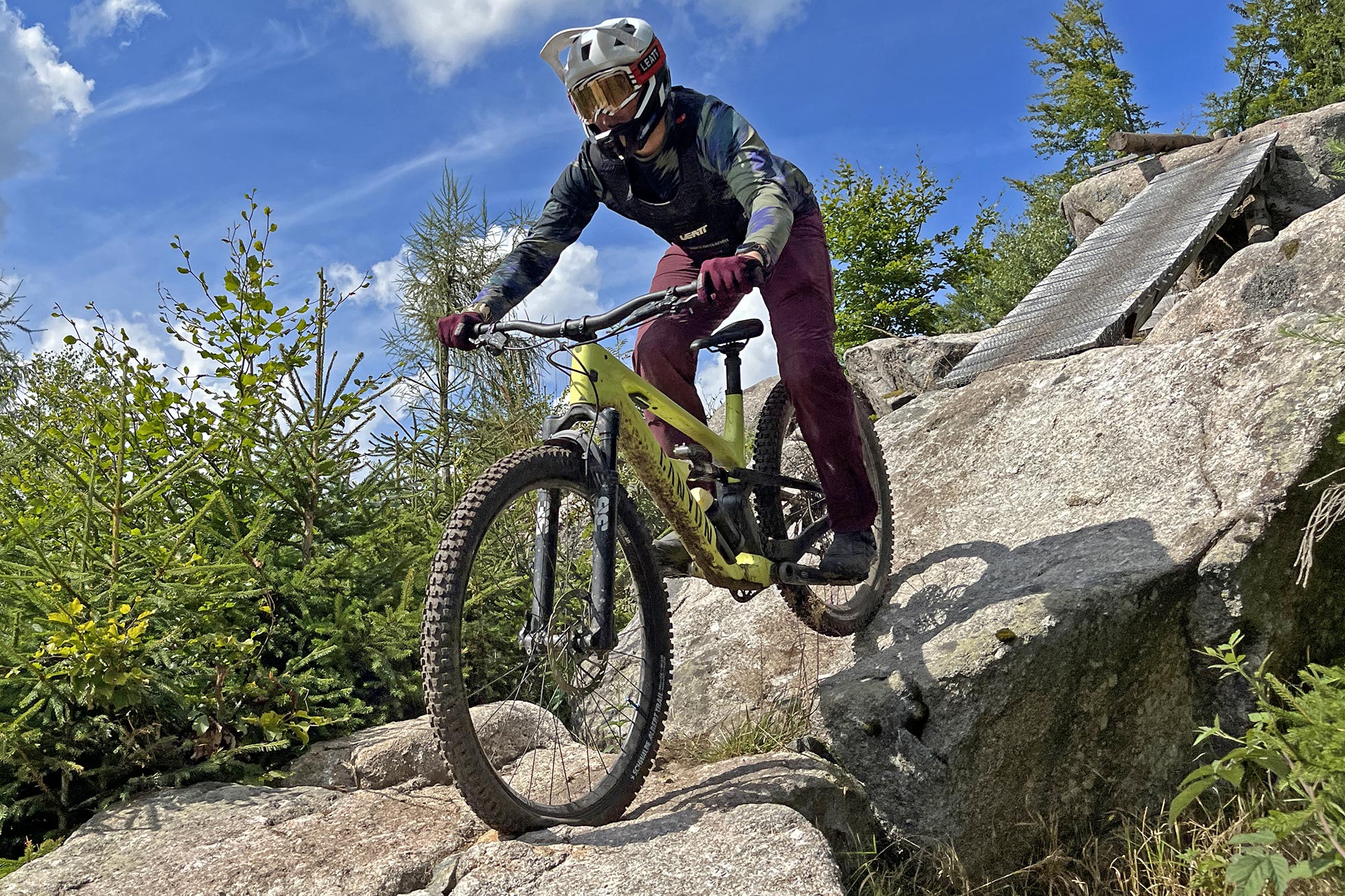About 2 months ago, I went to Finale to blind test Schwalbe’s all-new Albert Radial MTB tires. Next, I brought home those Gravity casing tires, and added some of their lighter Trail casing analogues. I then proceeded to ride them hard in all weather and all trail conditions to see if my glowing first impressions translated on home trails and familiar bike parks.
Get ready to nerd out on a new mountain bike tire for a bit…
Schwalbe Albert Radial MTB tires, an In-Depth Review
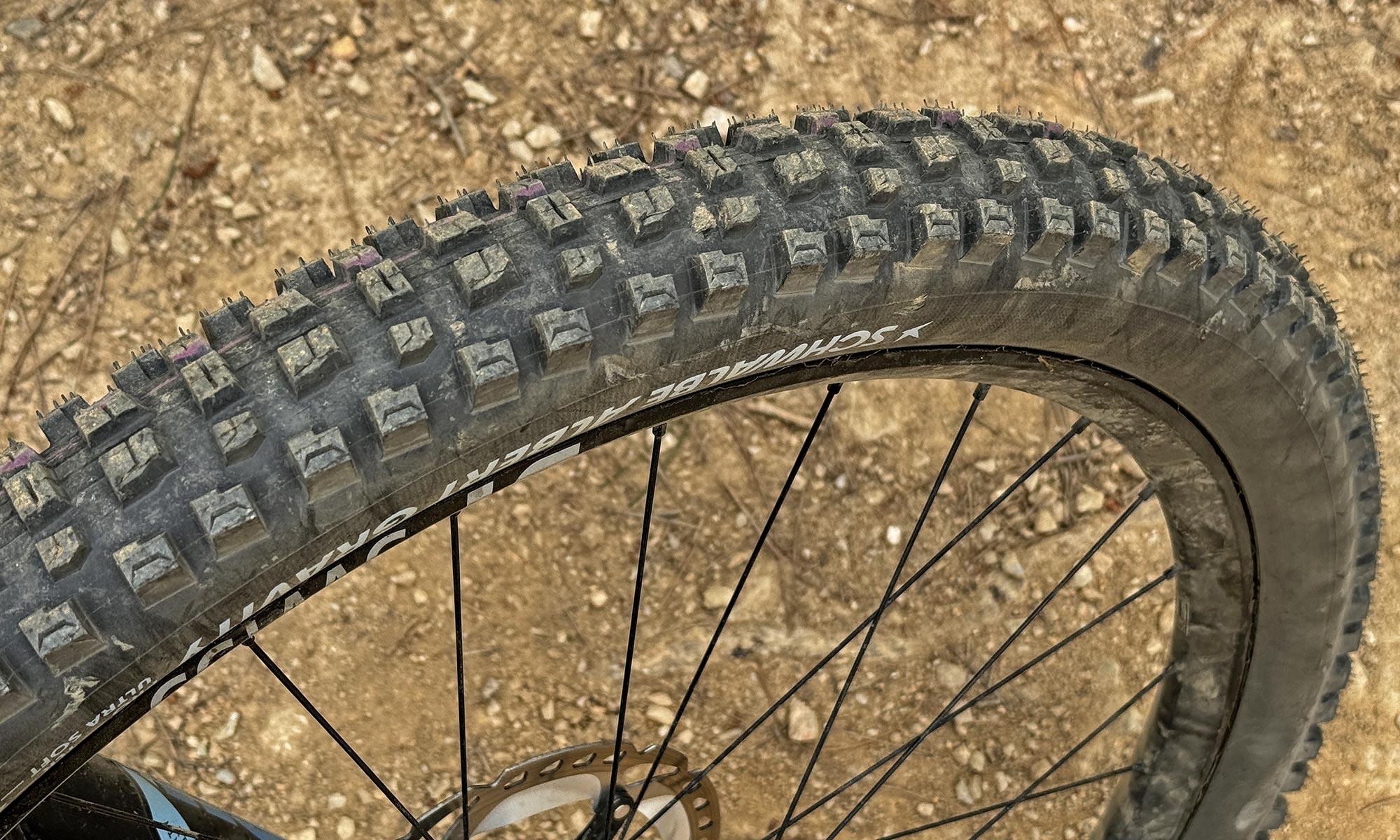
I can simply say, this is the grippiest new all-rounder enduro mountain bike tire setup I’ve ridden in years, while still not feeling slow on the climbs. I built up a new enduro test bike in the workshop last week, and these Albert Gravity Radials are the only tire I’ve even thought about putting on the new bike.
How great are the new Schwalbe Albert Radial mountain bike tires, really?
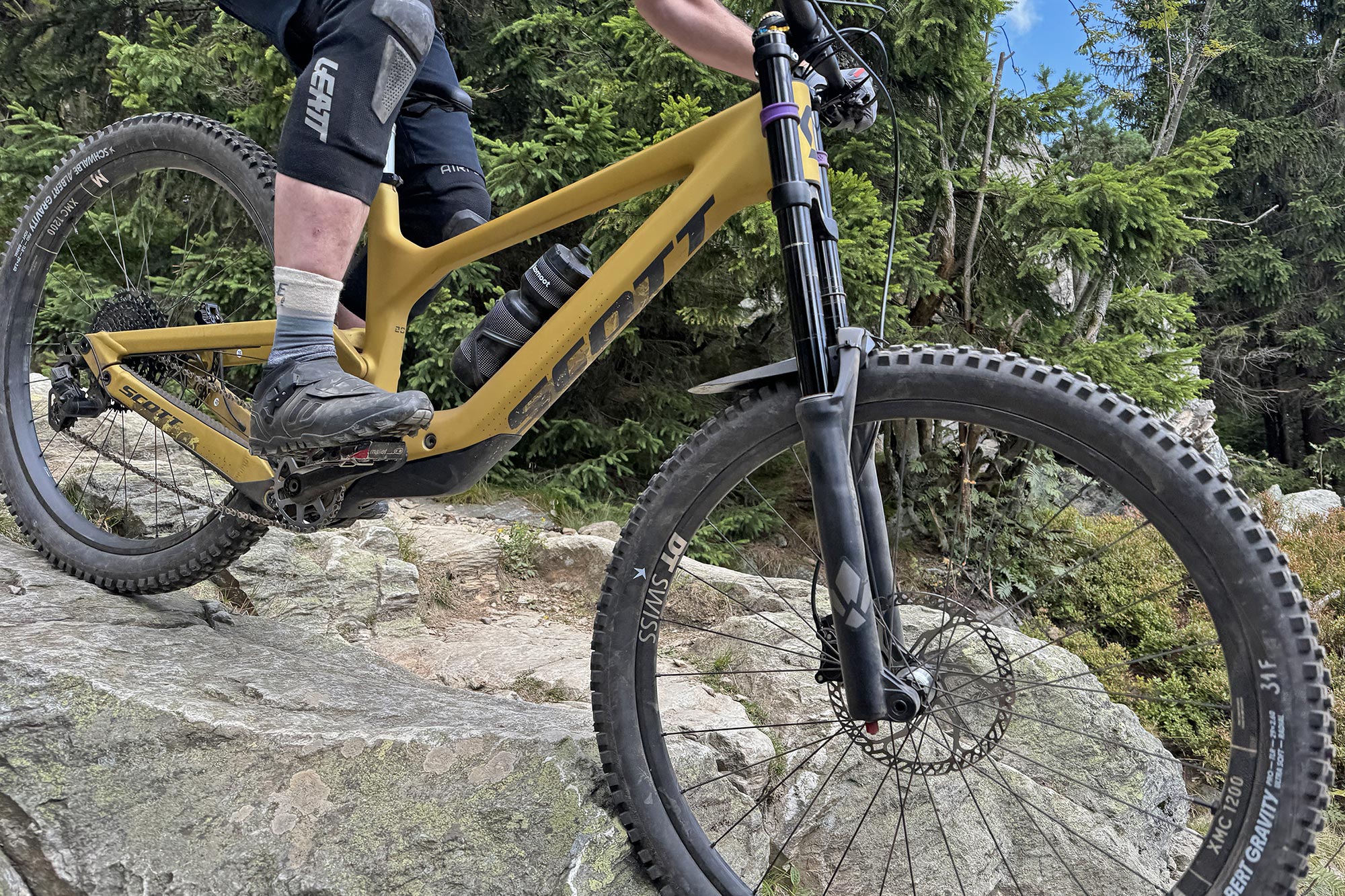
I know that my launch story on the new Schwalbe (almost) Radial tires late last week reads as a bit glowing. But rest assured, the PR info and tech details from the staid Germans at Schwalbe were not nearly so enthusiastic. In fact, their communications on this new tire was super basic. They pretty much stuck to a simple description of the conventional 45° structure orientation vs. the new one that was “a smaller angle” closer to a true radial orientation. And of course, their claim of 30% increased contact patch area at the same pressure, or 10% more contact even at 7psi/0.5bar higher tire pressures.
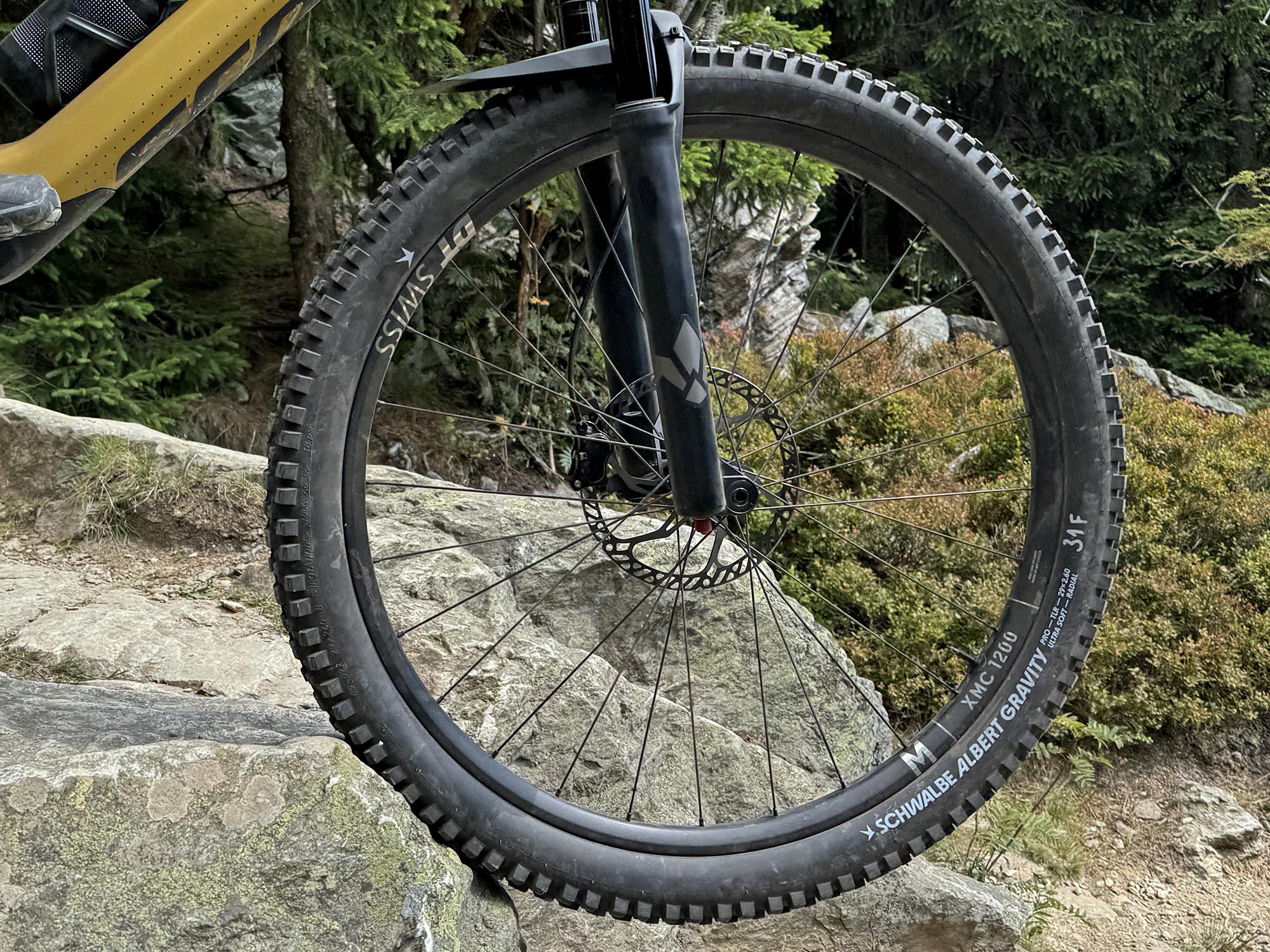
I just really appreciate how the change in fabric orientation inside the tire is so simple, and yet it has such a big, noticeable impact on how the tire performs.
Why does (more) Radial construction matter?
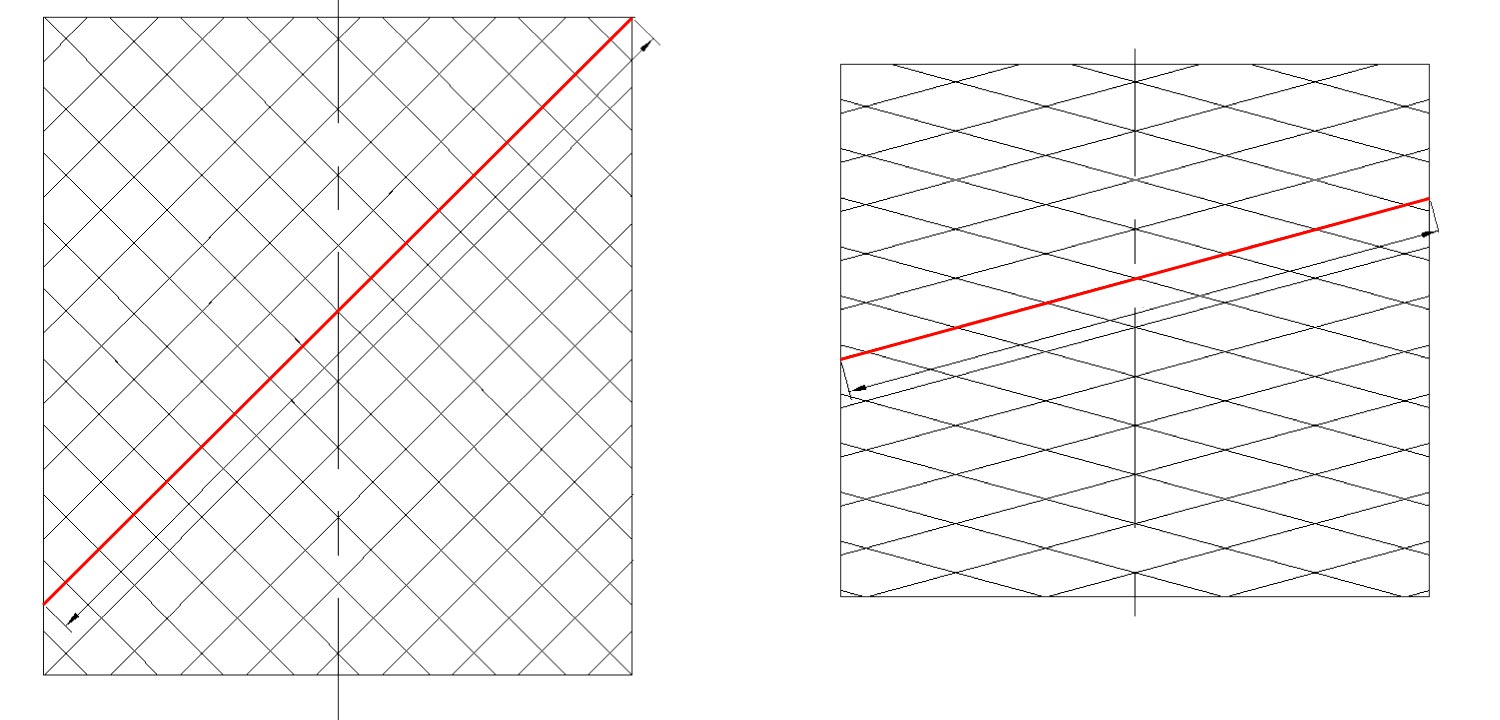
Schwalbe explains it by saying that their almost radial construction means ~25% shorter strands of the casing fabric from bead-to-bead. And because of the ~15° orientation of these fibers (vs. conventional 45° bias-ply), those fibers in the tire casing extend only 1/4 the distance in the direction of the tire’s rotation.
That effectively means that when an edge on the trail hits your tire, it only impacts 1/4 as many fibers across the cross-section of the tire casing at a time. And that results in much more localized deflection at the point of contact.
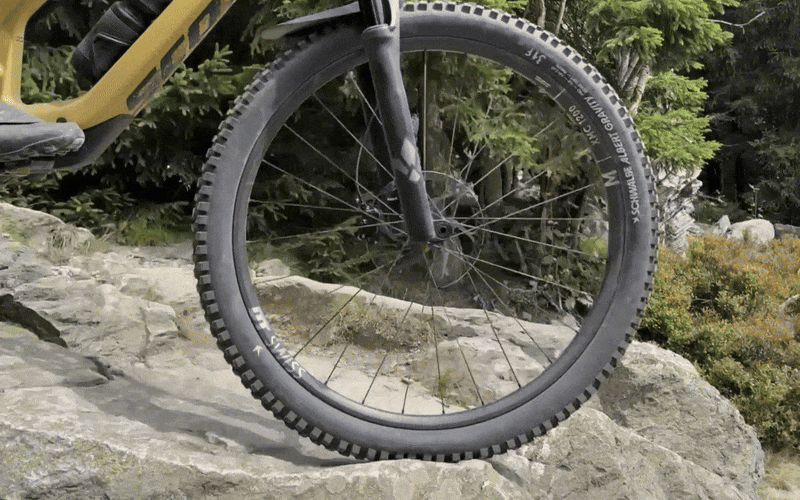
What you get is a structure where the tire knobs can fold over more closely to a trail obstacle, while also then allowing the entire large tire volume to spread the total impact force over a greater area of the tire.
More local grip connecting the tread to the ground. Greater contact patch area at the same tire pressures. And greater damping of the rebound (or bounce) from the spike of air pressure inside the tire volume when hitting an obstacle.
Feel free to read more about the tech in my original launch coverage, here.
How much do they actually weigh?
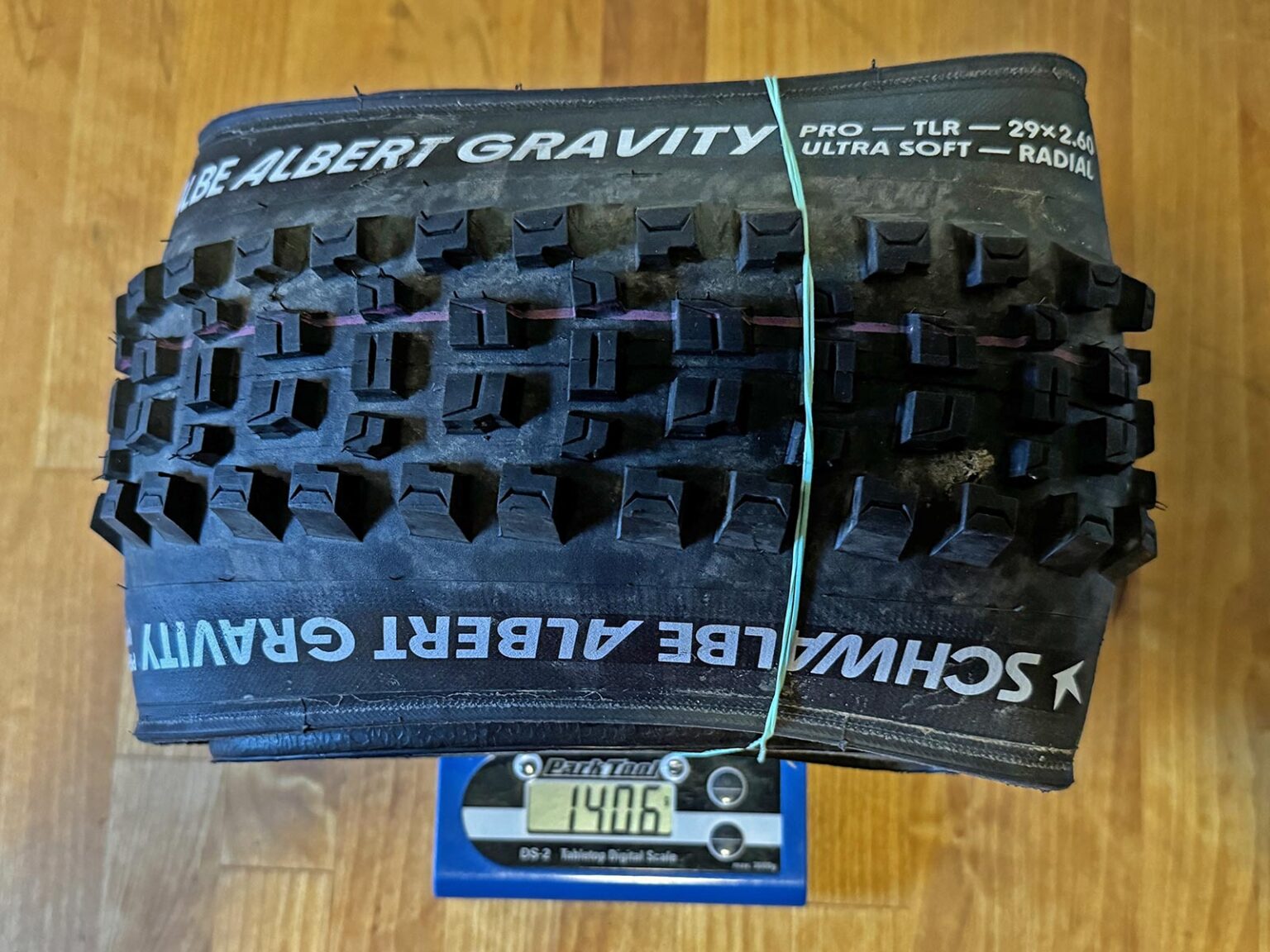
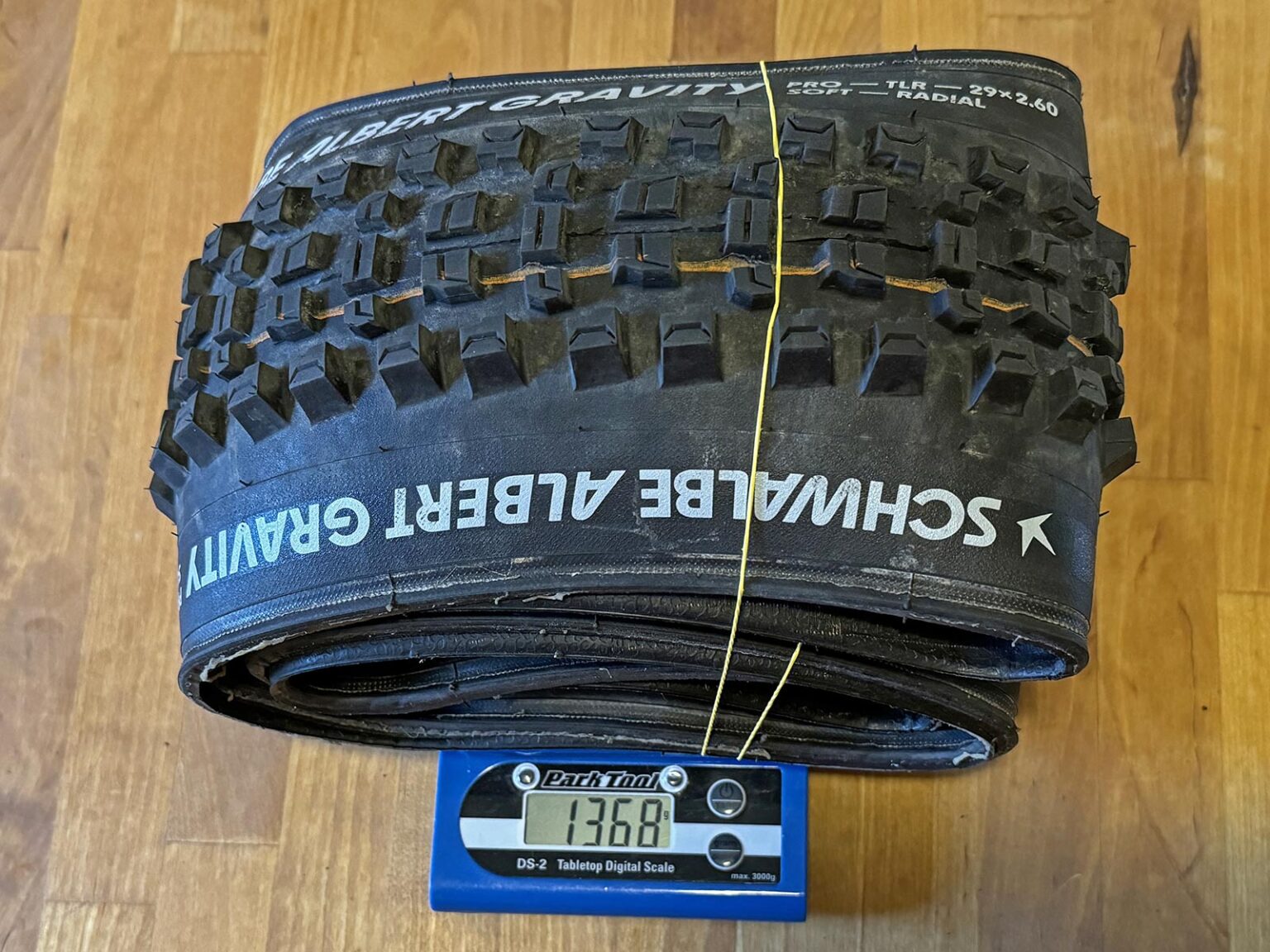
In the lead-up to the Albert Radial product launch, Schwalbe didn’t actually send us any weight figures, simply stating that the new Radial construction did not change weights vs. their conventional tire construction. But the Albert Gravity & Trail Radials are actually an all-new tire, so let’s break down the weight claims on the 4 tires we’ve been testing…
- Schwalbe Albert Gravity Radial 29 x 2.6″ Ultra Soft – claimed weight 1330g – actual sample weight 1406g
- Schwalbe Albert Gravity Radial 29 x 2.6″ Soft – claimed weight 1330g – actual sample weight 1368g
- Schwalbe Albert Trail Radial 29 x 2.5″ Ultra Soft – claimed weight 1180g – actual sample weight 1148g & 1188g
- Schwalbe Albert Trail Radial 27.5 x 2.5″ Soft – claimed weight 1180g – actual sample weight 1093g & 1120g
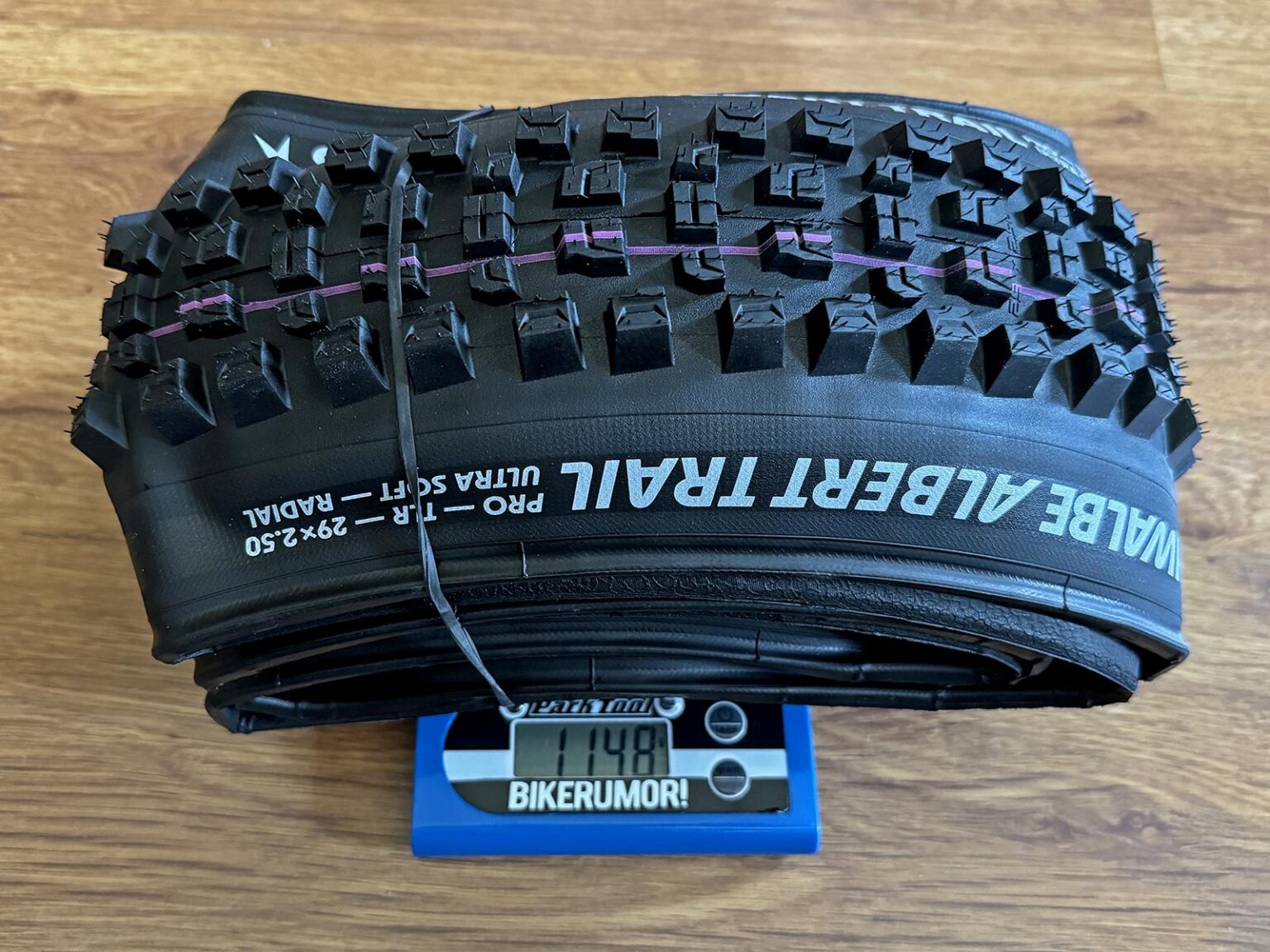
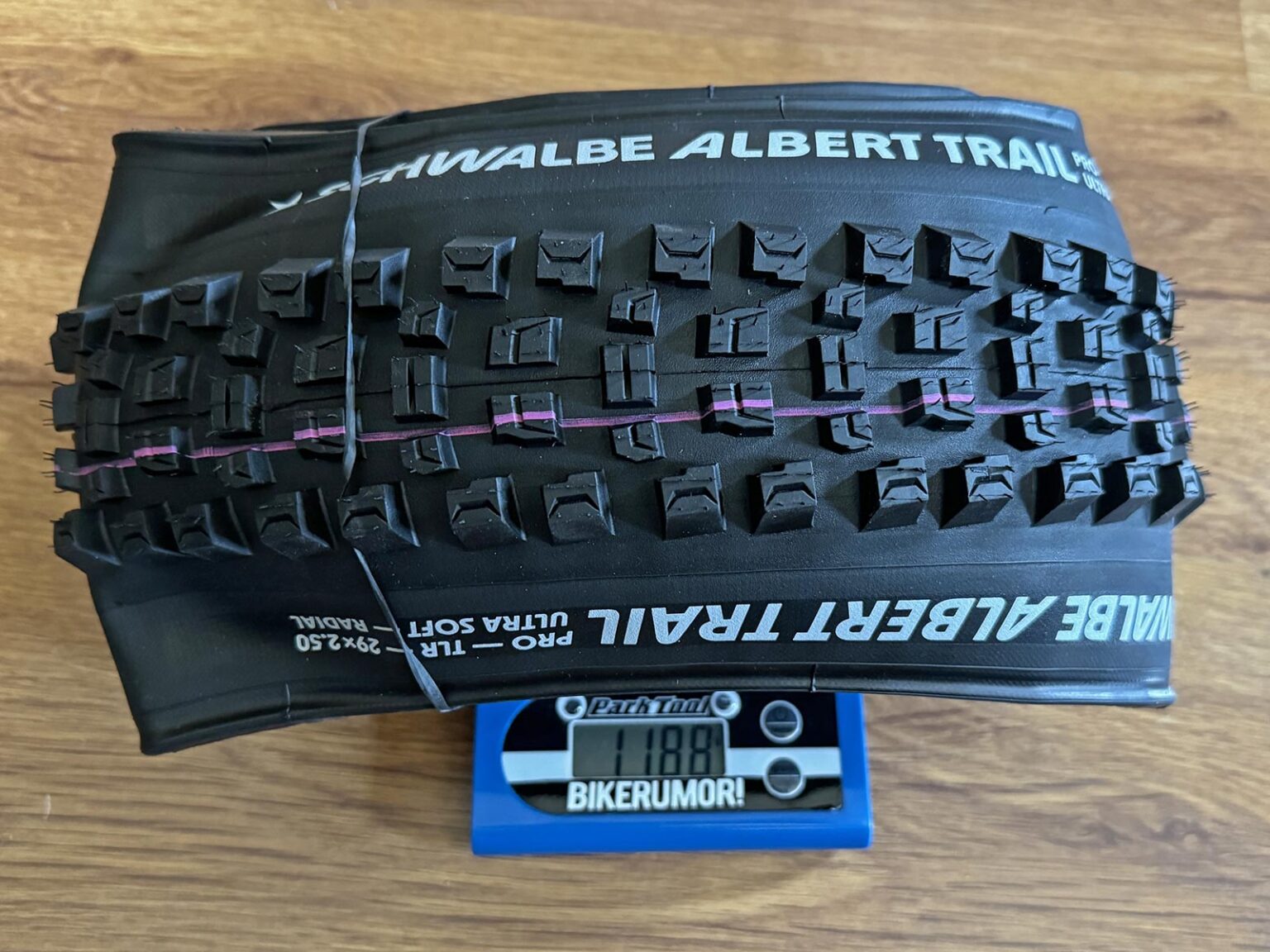
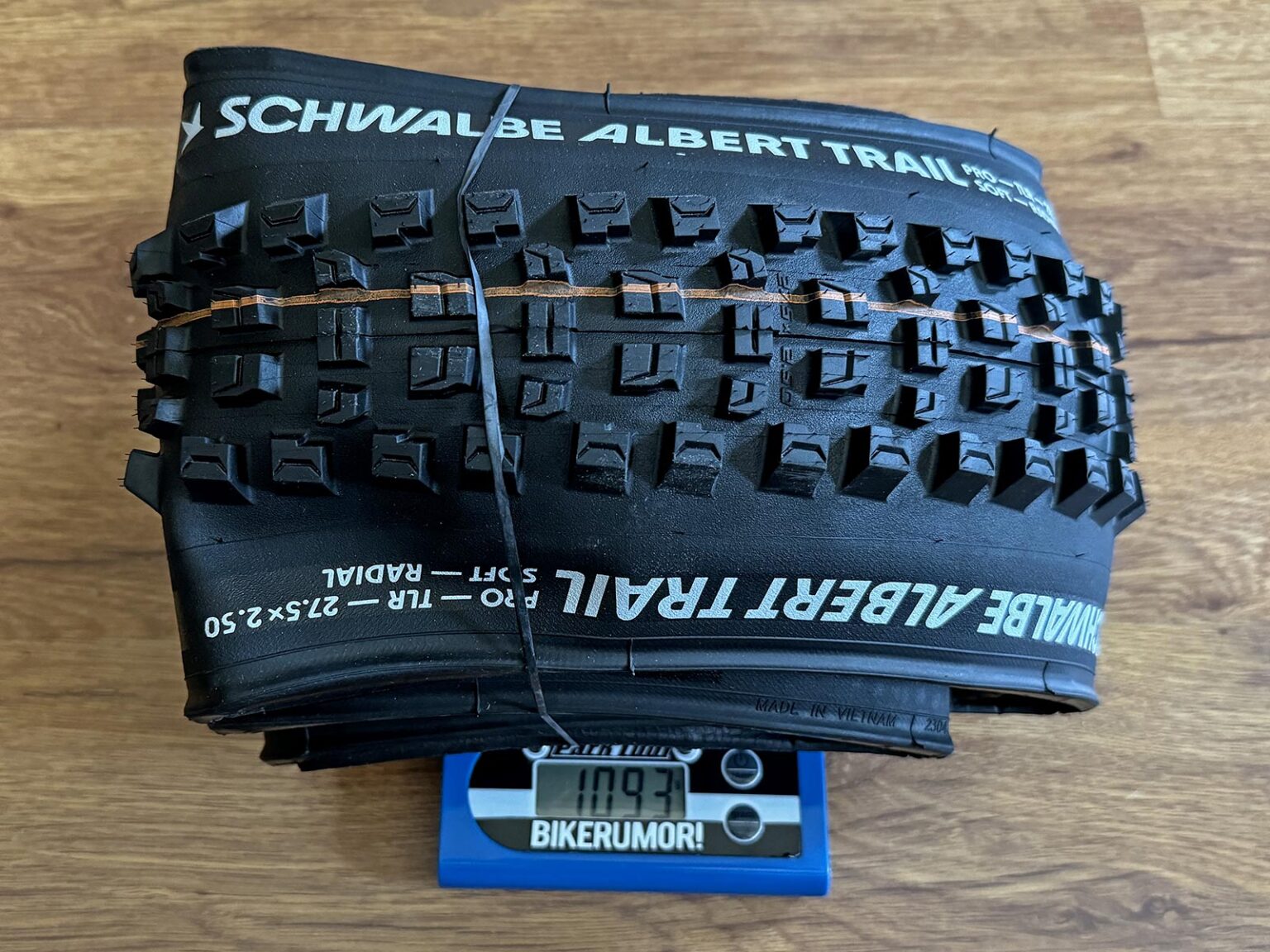
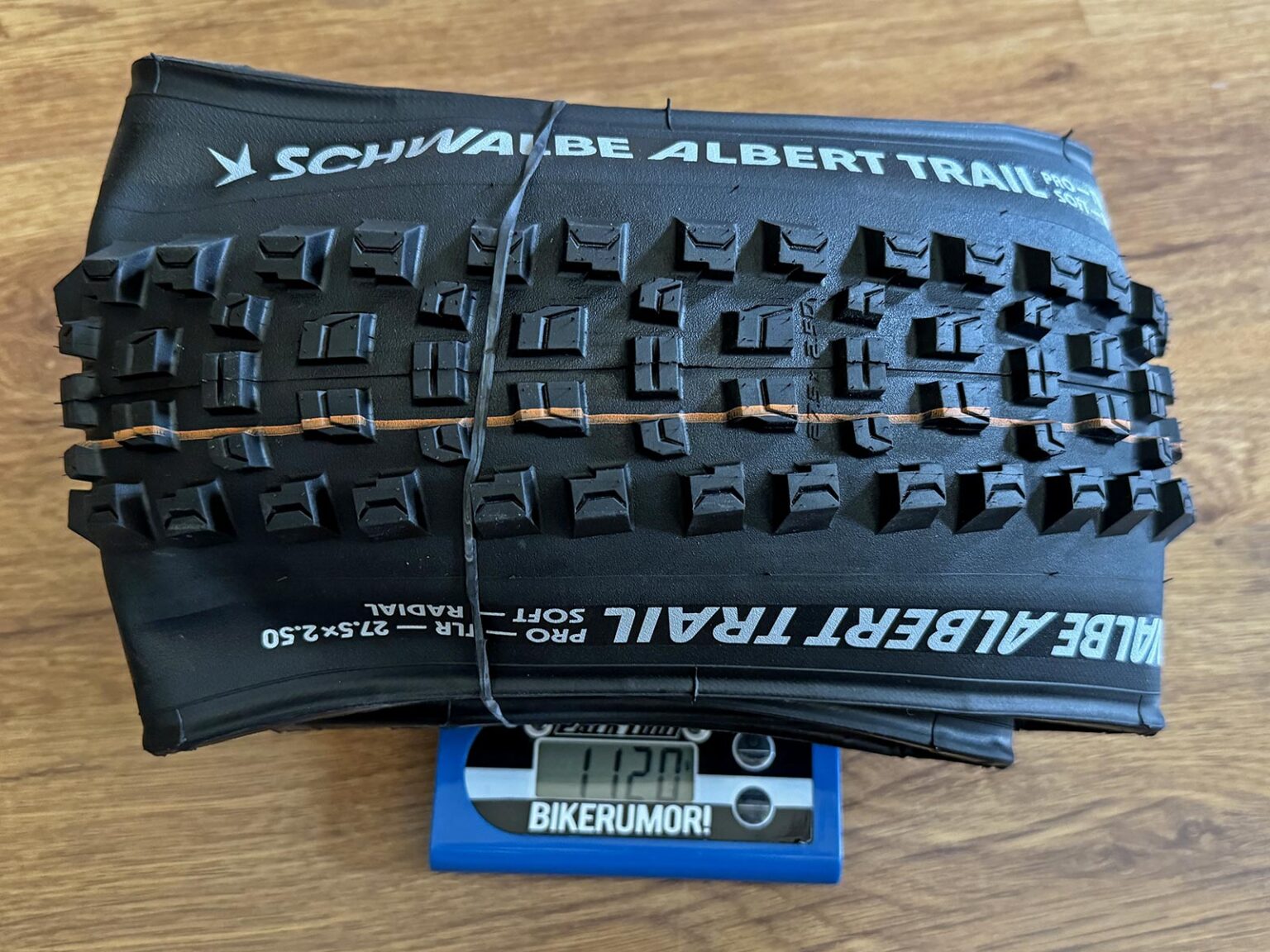
Generally speaking, our Gravity tires are a bit heavier & Trail tires a bit more than the Schwalbe claims, but within reason for tire-to-tire variation. And also probably a more accurate representation of the different weights of the wider & softer tires vs. the narrower & smaller diameter tires.
(Note: A word of caution, I don’t entirely trust the claimed weights on Schwalbe.com as there are several different sizes that list the same weight, and no weights are listed yet on the Schwalbe US website.)
Blind testing that sold me on Radials
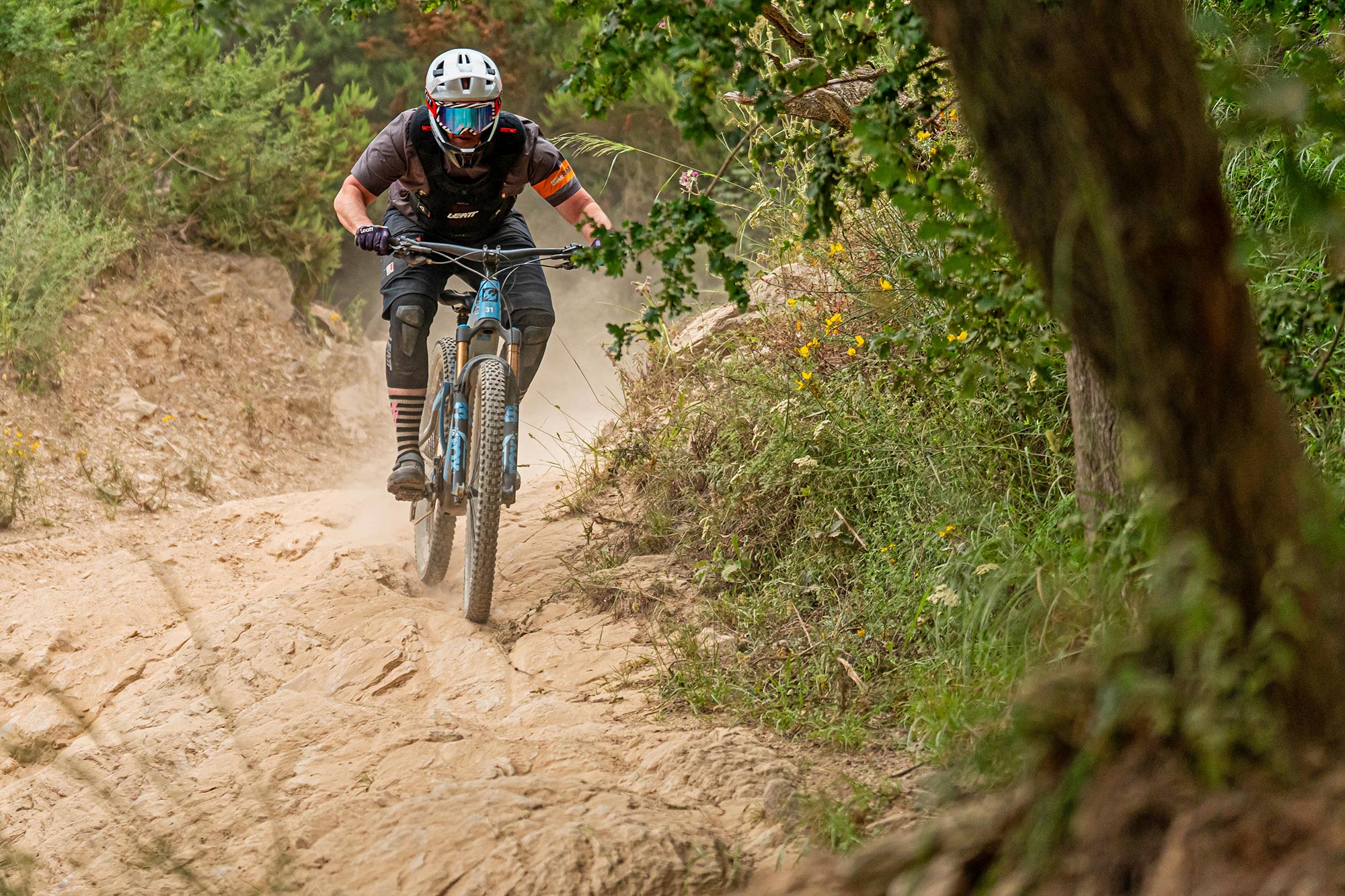
My first ride on the new tires was in 10 blind back-to-back laps on a single classic Finale Ligure trail over the course of 6 hours. Getting uplift shuttles and tuning by Evolve Finale on a Pivot Shuttle all-mountain ebike.
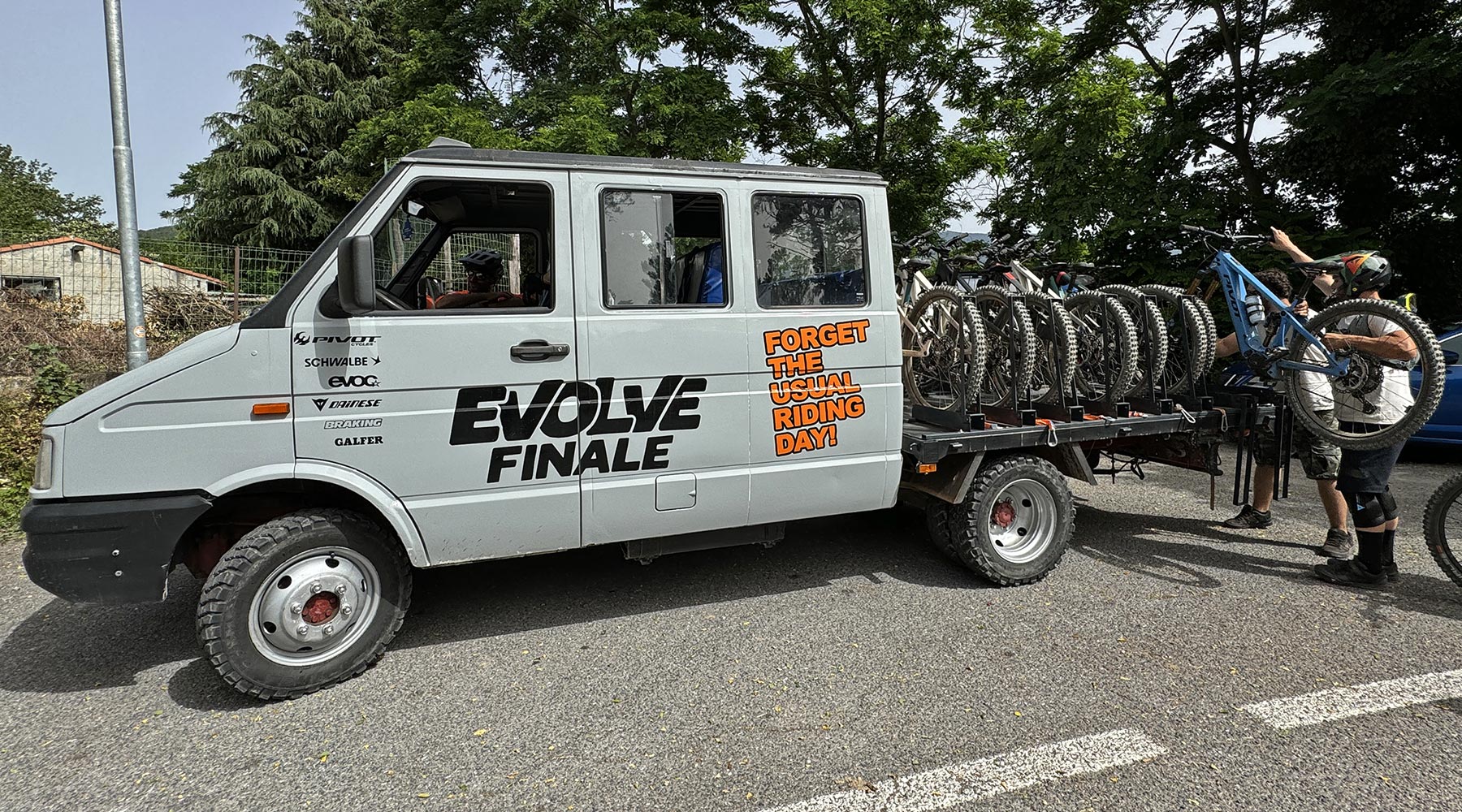
With my suspension dialed in for the mix of hardpack, rock & dusty corners, I set off on the first descent. Not knowing what tires I was riding or what new tech to expect, Schwalbe’s engineers set my starting tire pressure based on my typical preference.
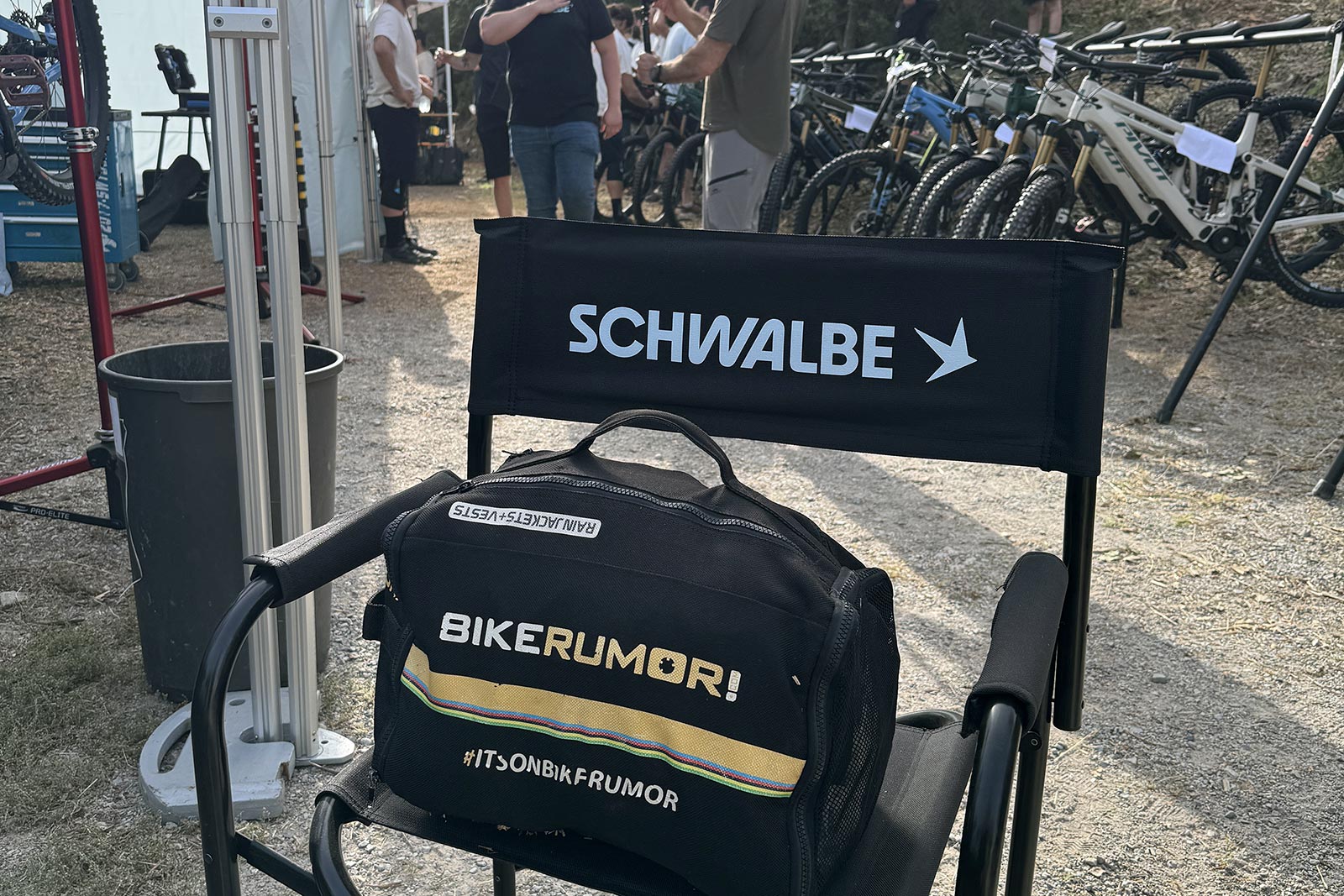
After each lap, we recorded my impressions and the mechanics made small pressure adjustments as I requested. Over 4 runs including an extended climbing lap, I adjusted pressures down quite a bit for more grip in the soft bits, then back up to an ideal grip balanced with enough support in the hard corners & off-cambers.
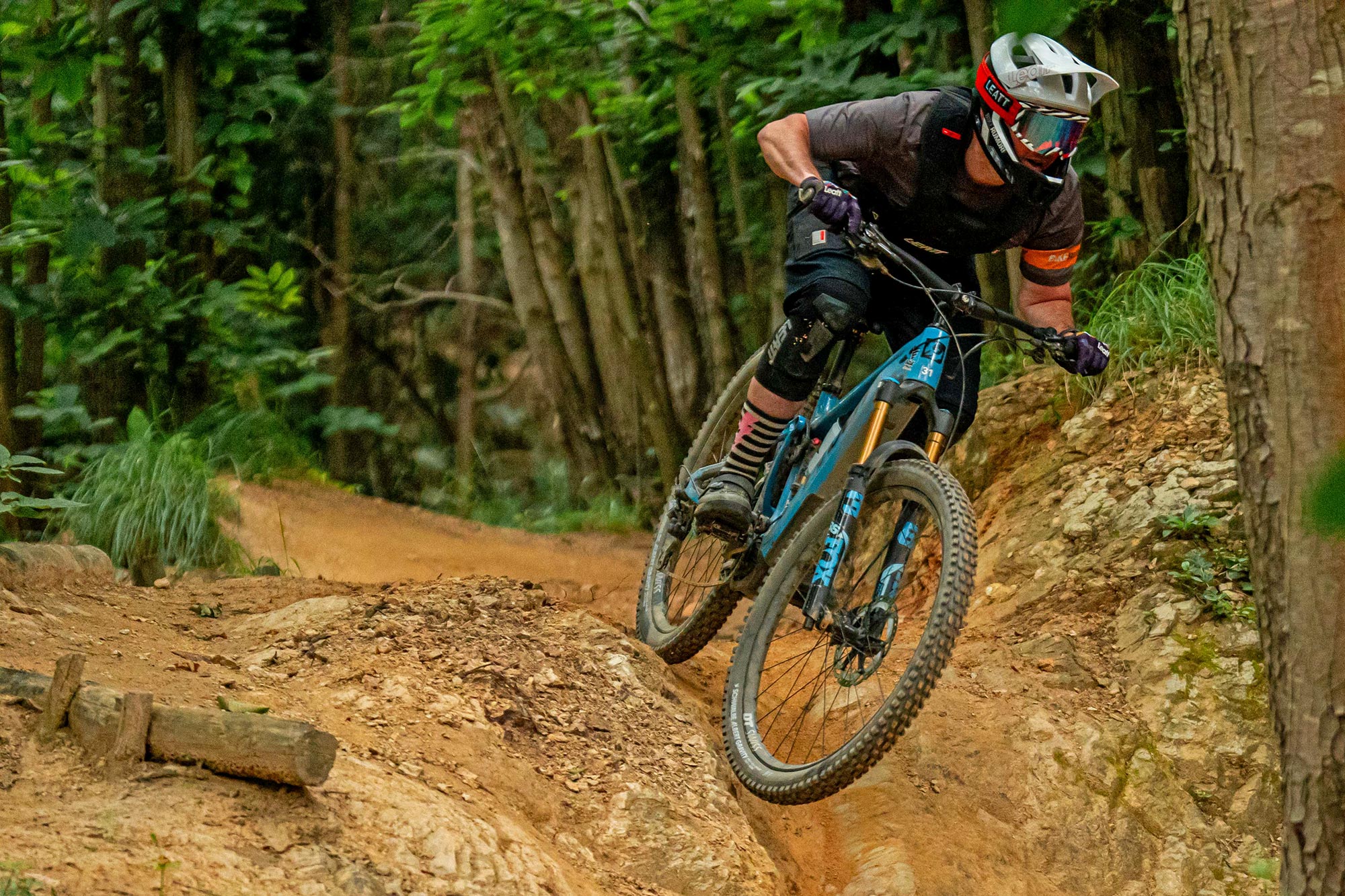
Next, Schwalbe swapped in the new tires (at what they later told me was +4psi higher pressures), and I did 6 more laps with 1 more climbing section. I wasn’t 100% sure what had changed, but I immediately felt I had more grip AND more support. Ultimately, I again dropped tire pressures a bit more to match the same feeling of sidewall support as the first tires, but with a lot more sense of grip and control through the roughest sections.
Super Gravity vs. Gravity Pro Radial
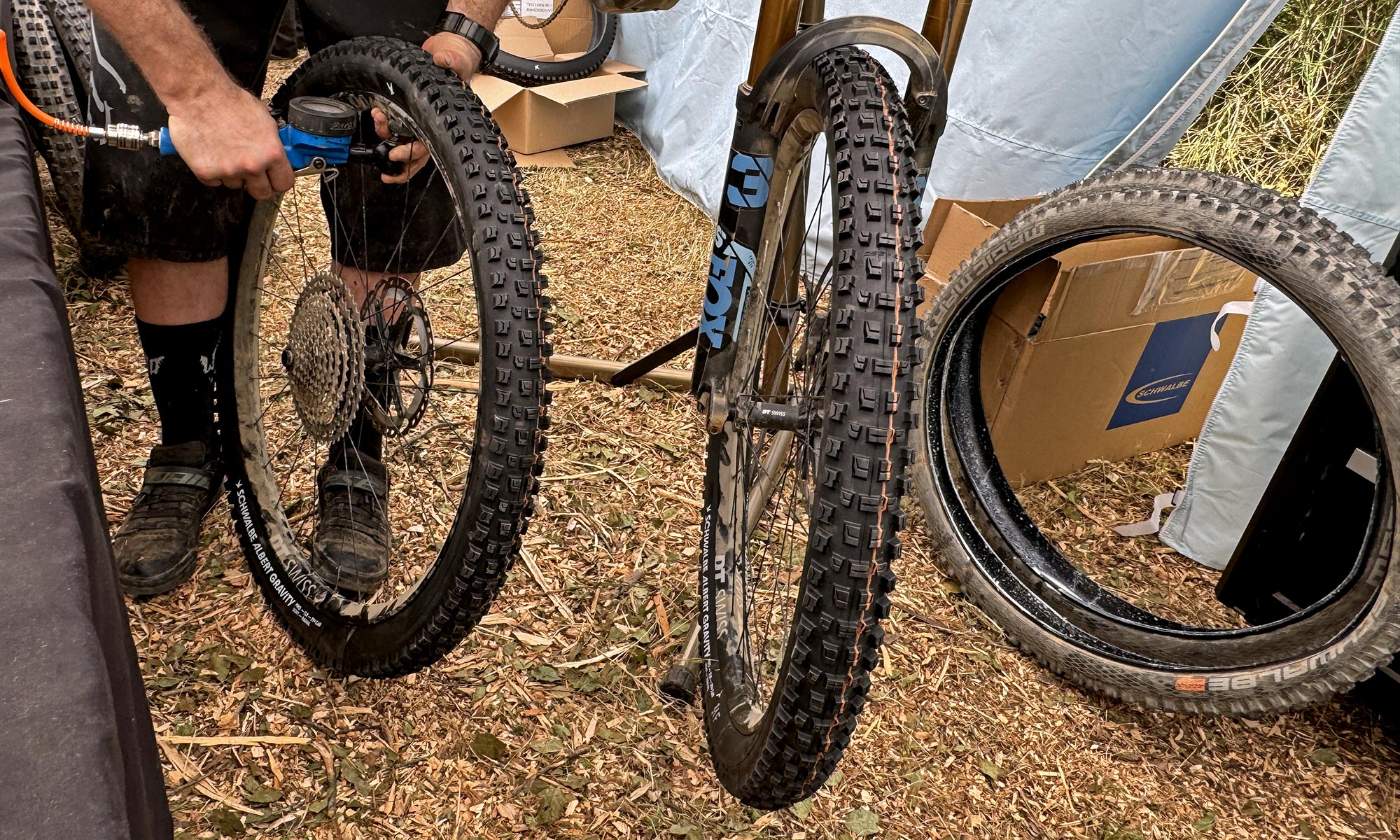
In the end, I started riding a conventional Magic Mary Super Gravity setup getting it down to 19/22psi (front & rear) for the demanding but not crazy fast or ultra-technical riding. And then I finished on these new Albert Gravity Radials, settling in a bit higher pressure at 20/23psi, but a feeling of better grip and control.
Only later that evening did Schwalbe explain what was different inside the tire.
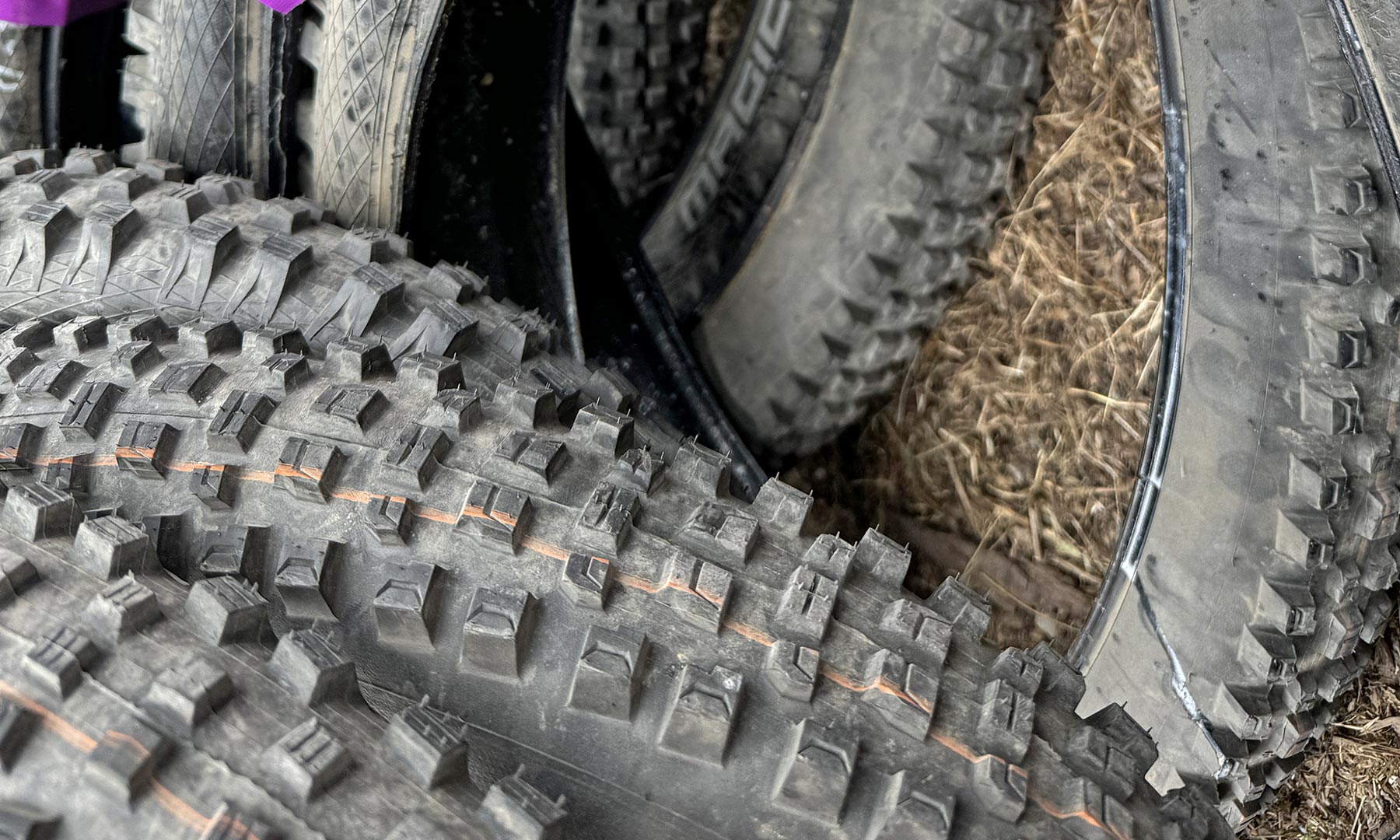
But I already knew that I wanted the new Radials.
And I immediately swapped them onto a pedal-powered Pivot Firebird enduro bike for another day of Finale shuttled trail riding.
Riding Review: The new almost-radial tires that simply grip better than ever!
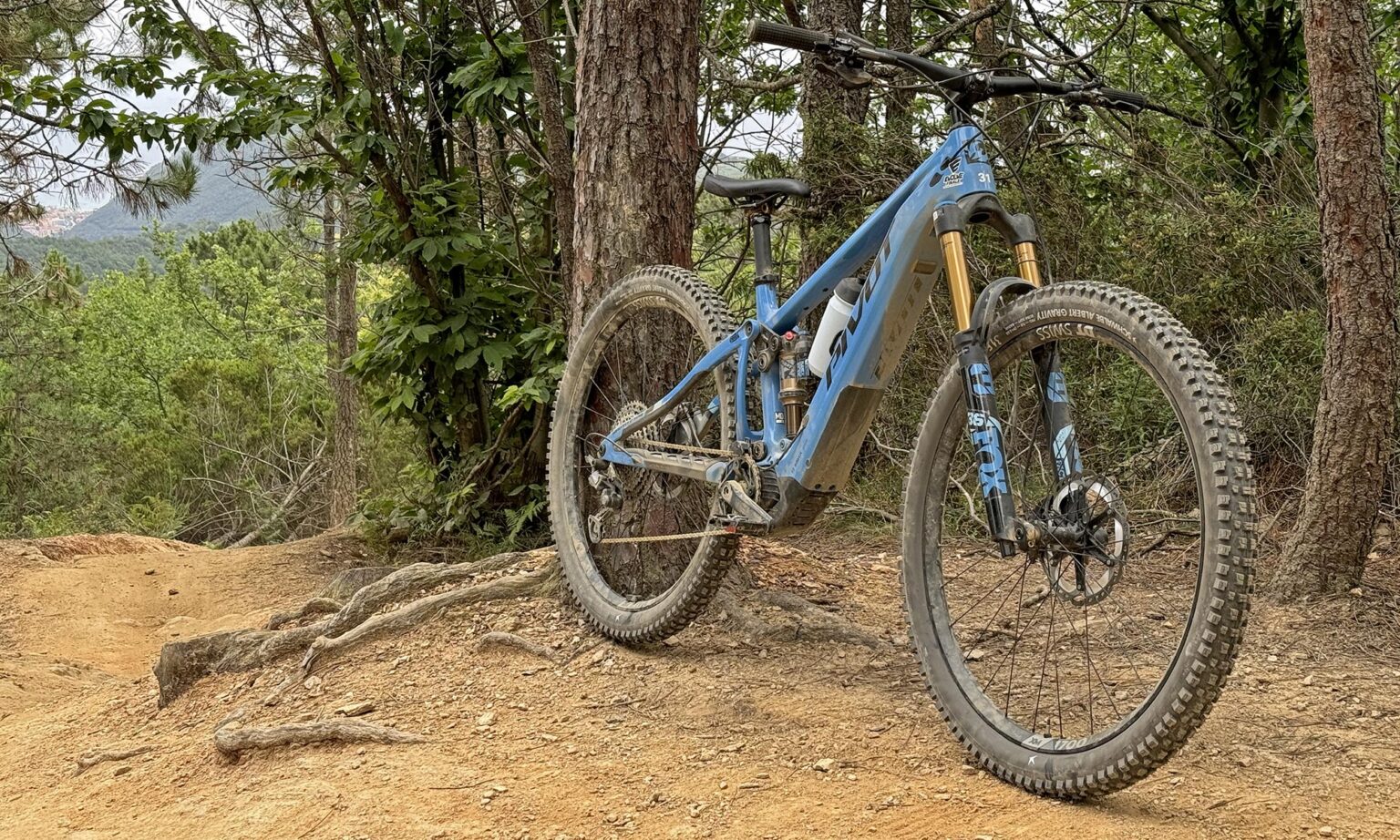
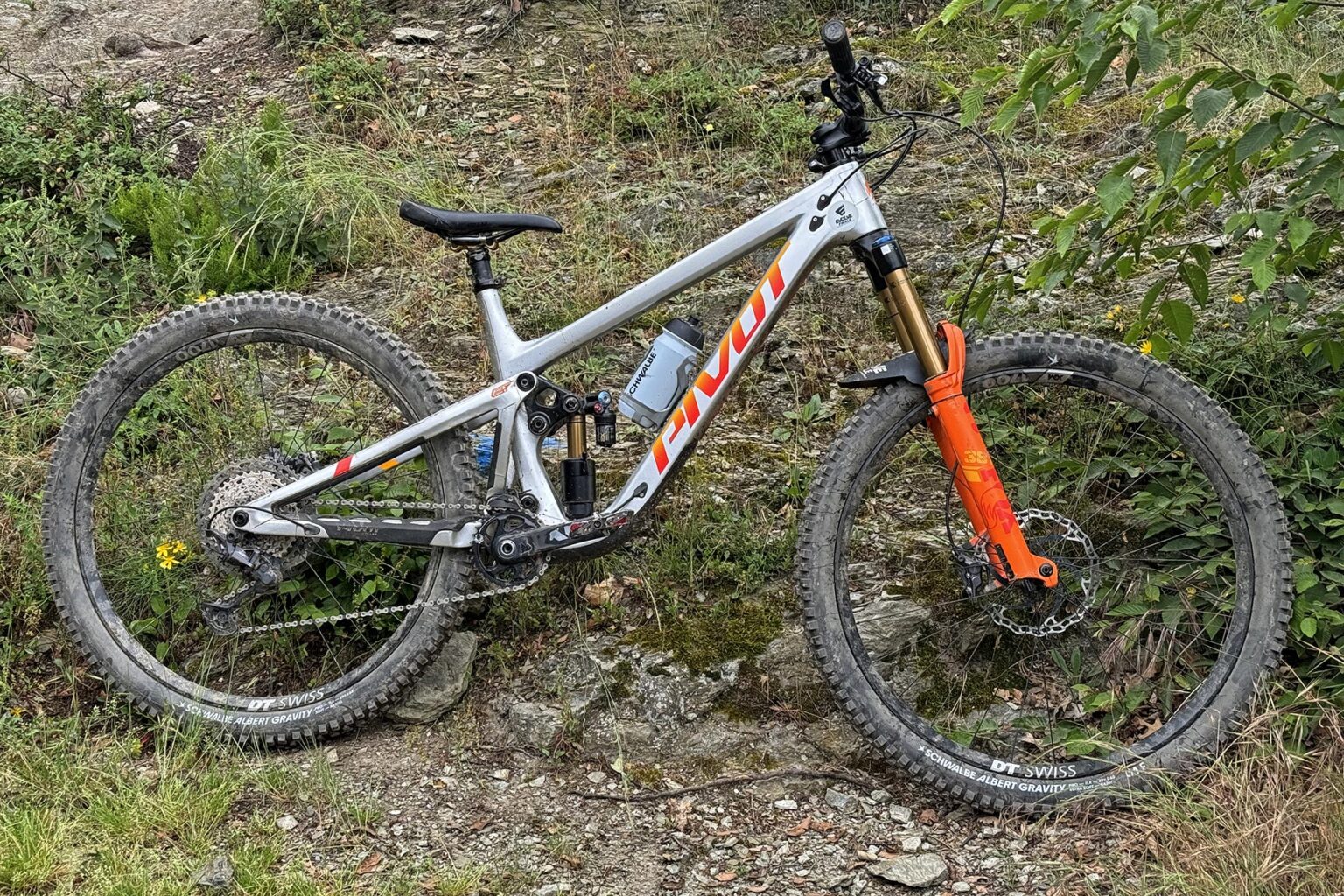
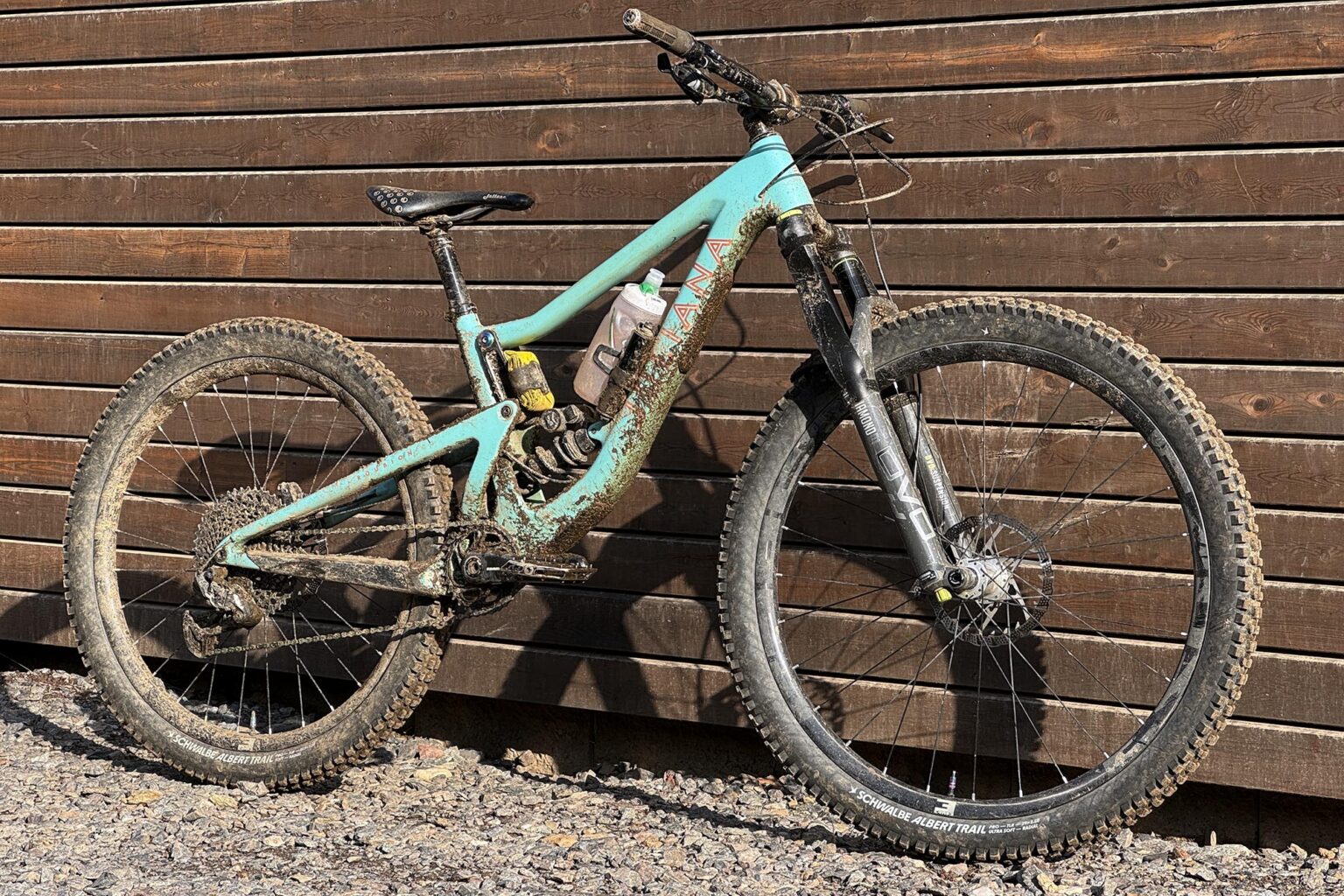
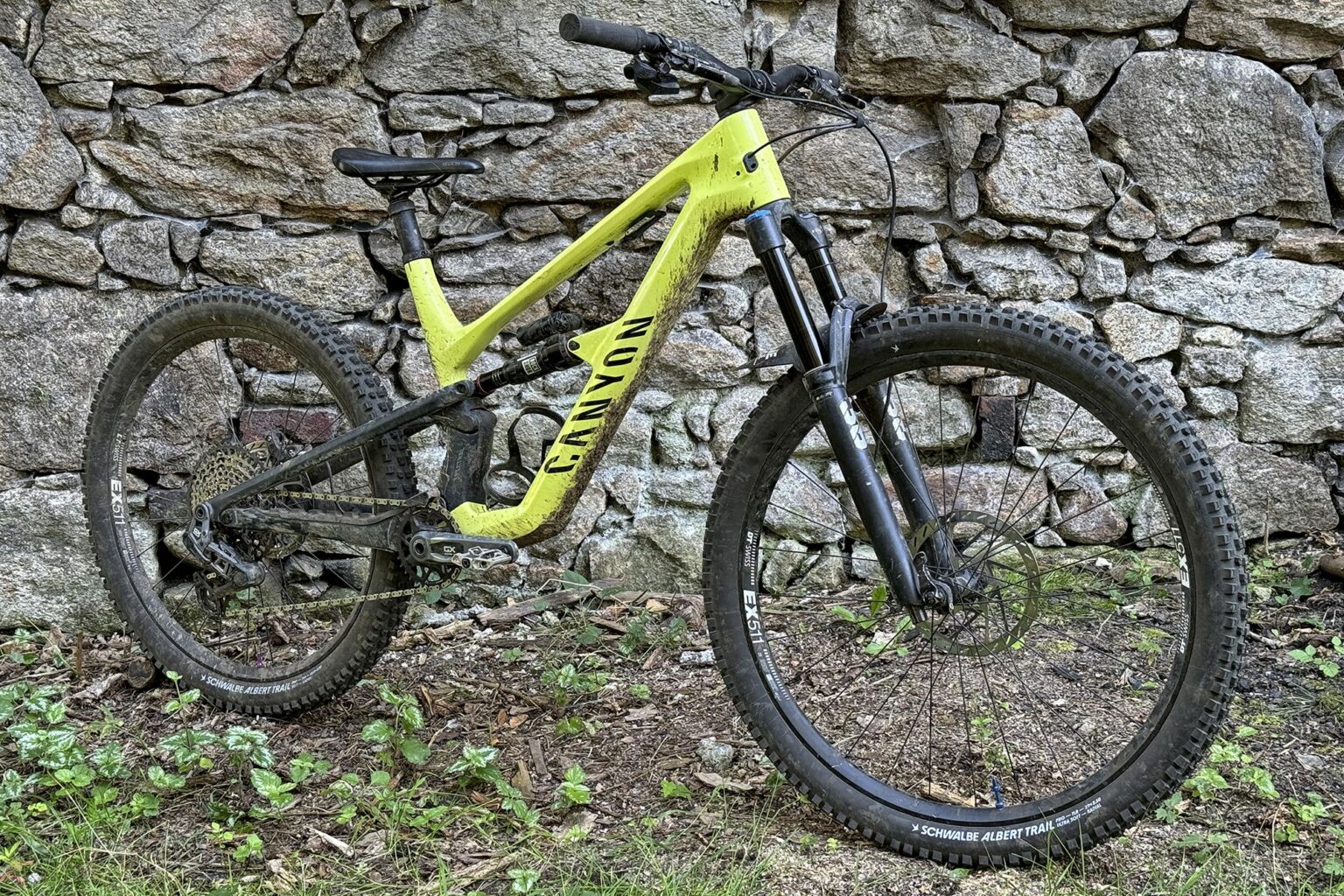
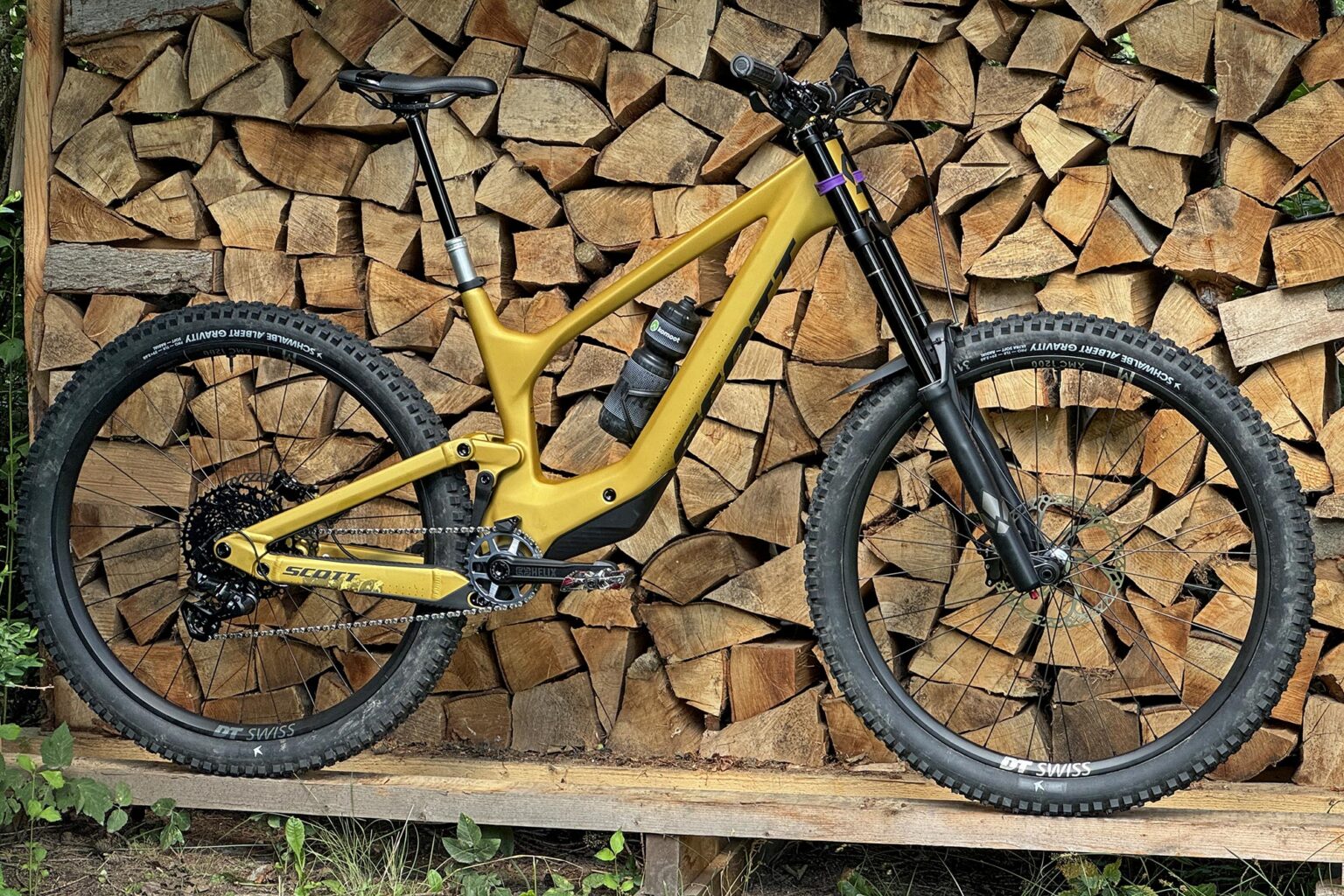
Since returning home from two 29er Pivot test bikes, I swapped to the lighter Albert Trail Radial tires, mounting them on two mixed wheel all-mountain test bikes. I wanted to see how they fared as trail and enduro riding all-rounders, sometimes getting uplifts, but more often than not pedaling up the climbs.
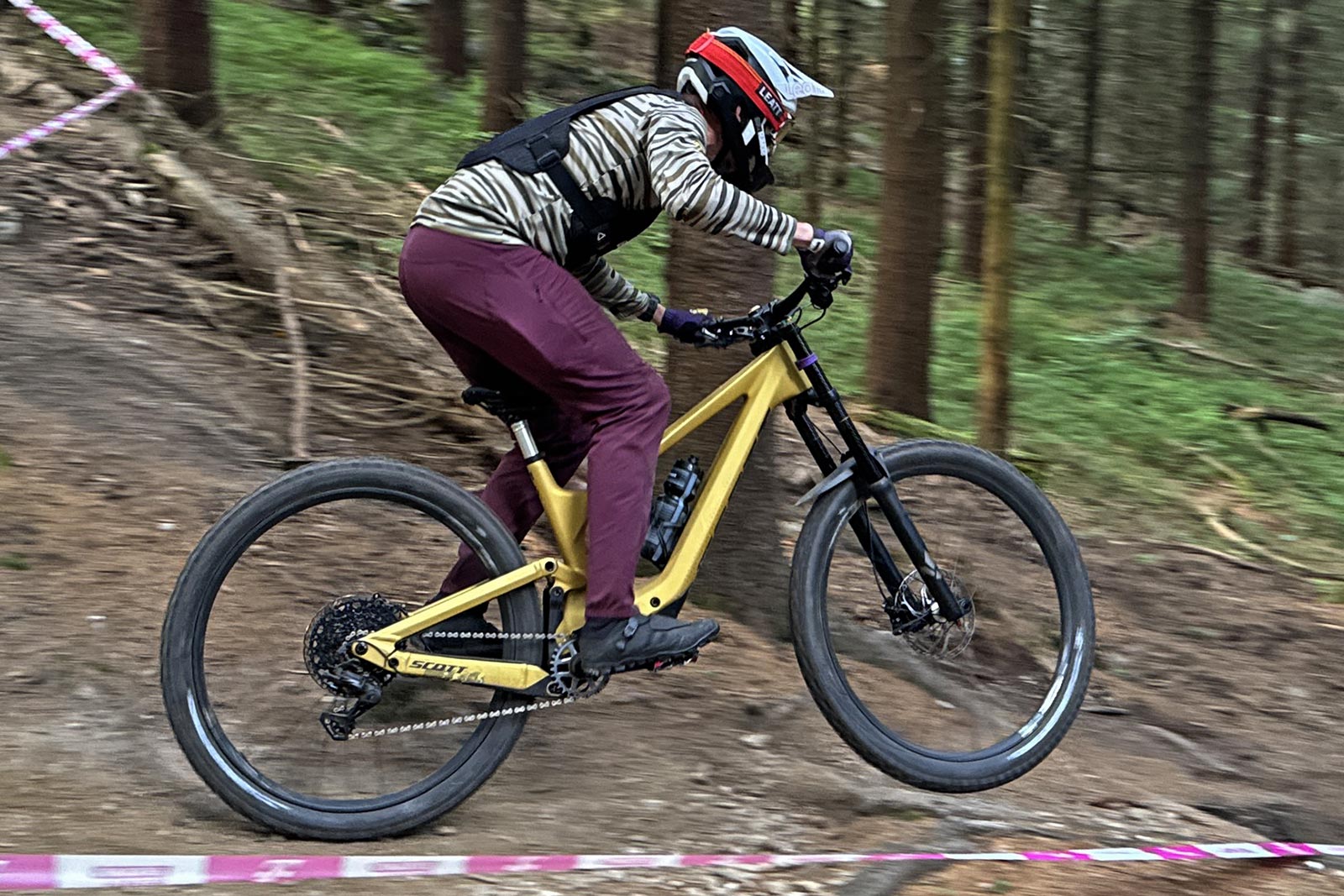
Ultimately, the 29er Gravity Radials ended up on a new golden enduro test sled…
And still… Schwalbe’s new Radial tires continued to impress.
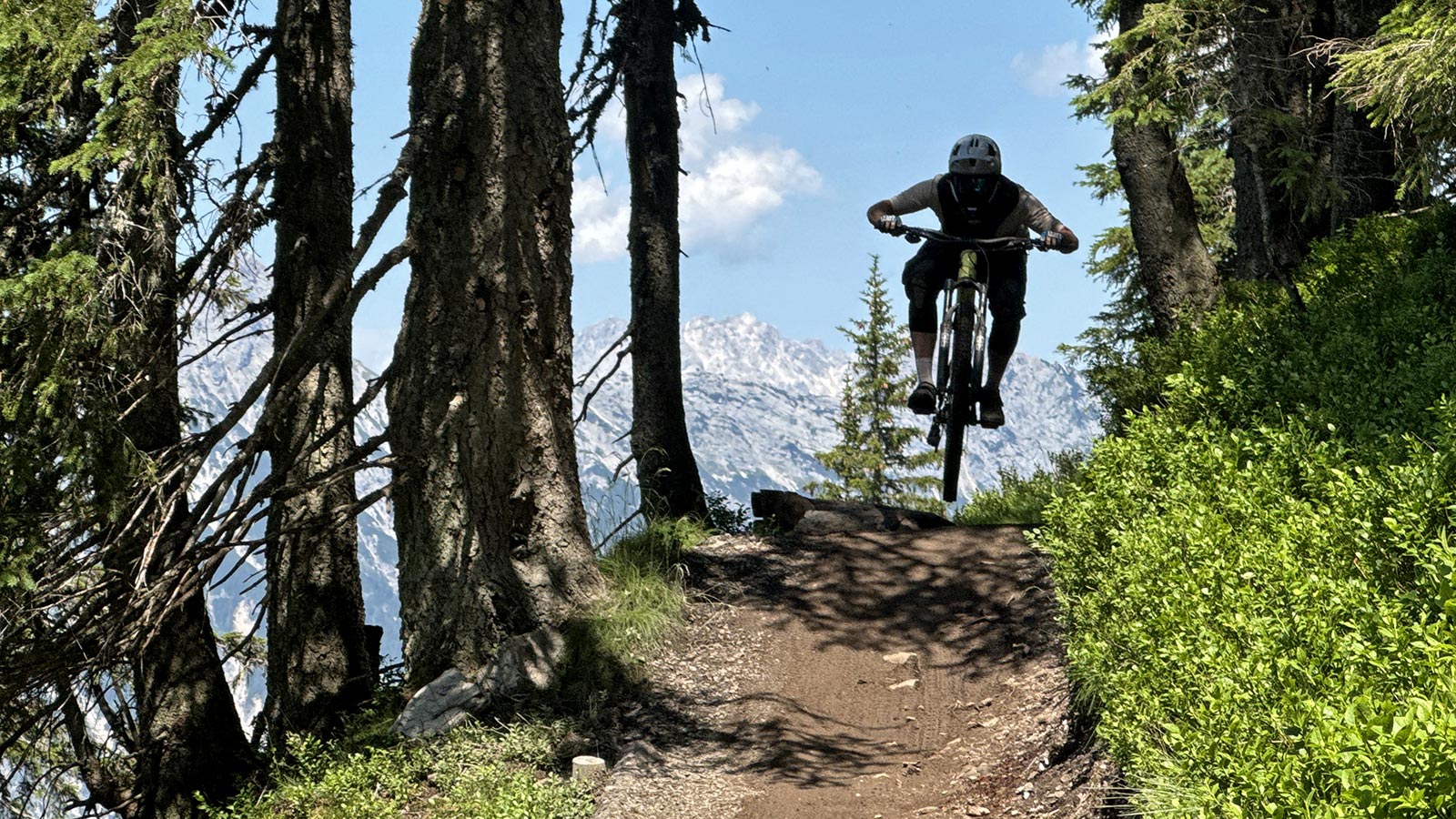
Running just about 5psi more pressure than we had been in Maxxis Minion EXO+ & Conti Kryptotal Enduro tires, the more closed tread Albert delivered more grip, an improved supple feel, and comparable (or even better) cornering stability.
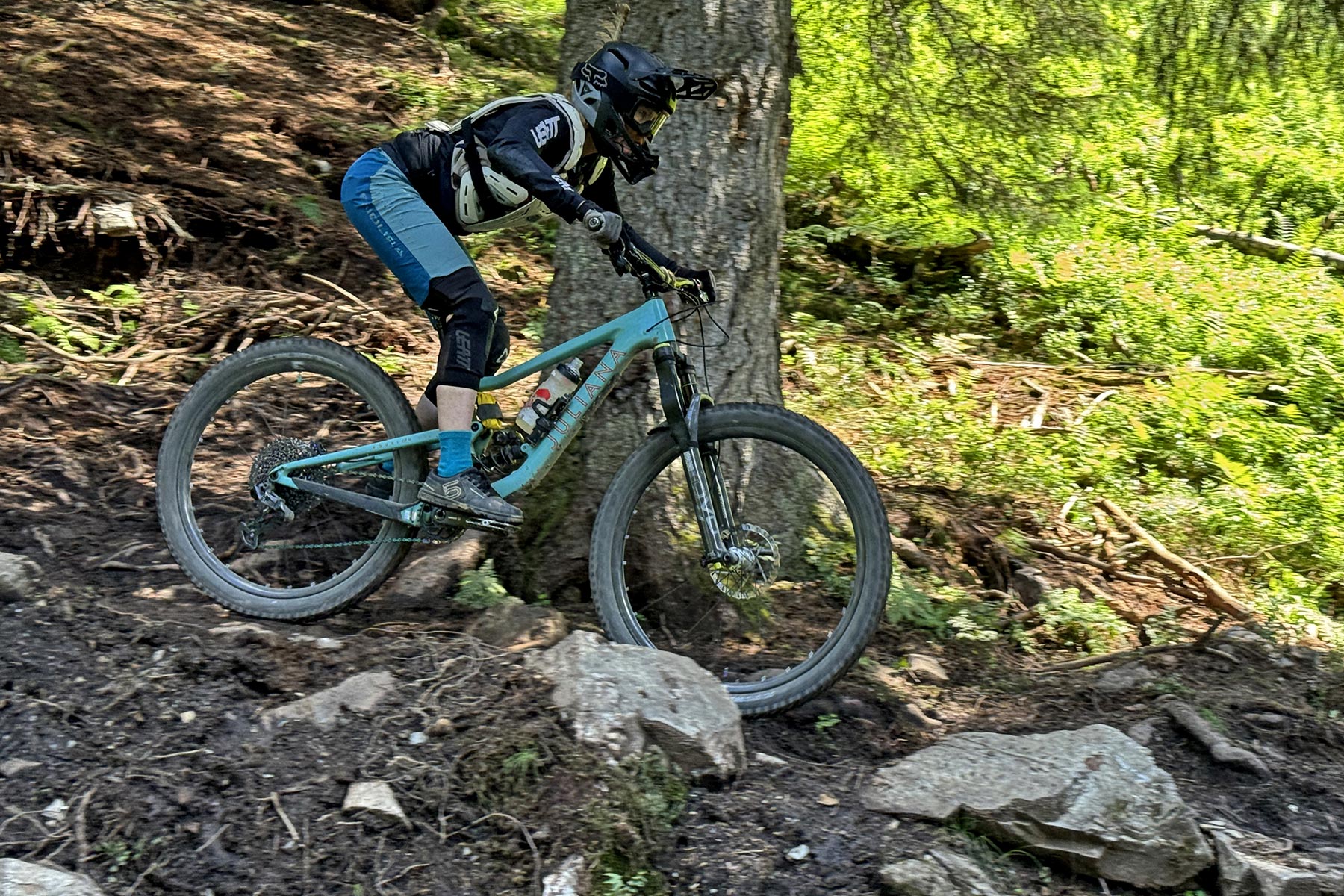
After my first rides in Finale, we were not too surprised to feel how reliably grippy the tires felt on dry trails – both hardpacked and those with loose corners.
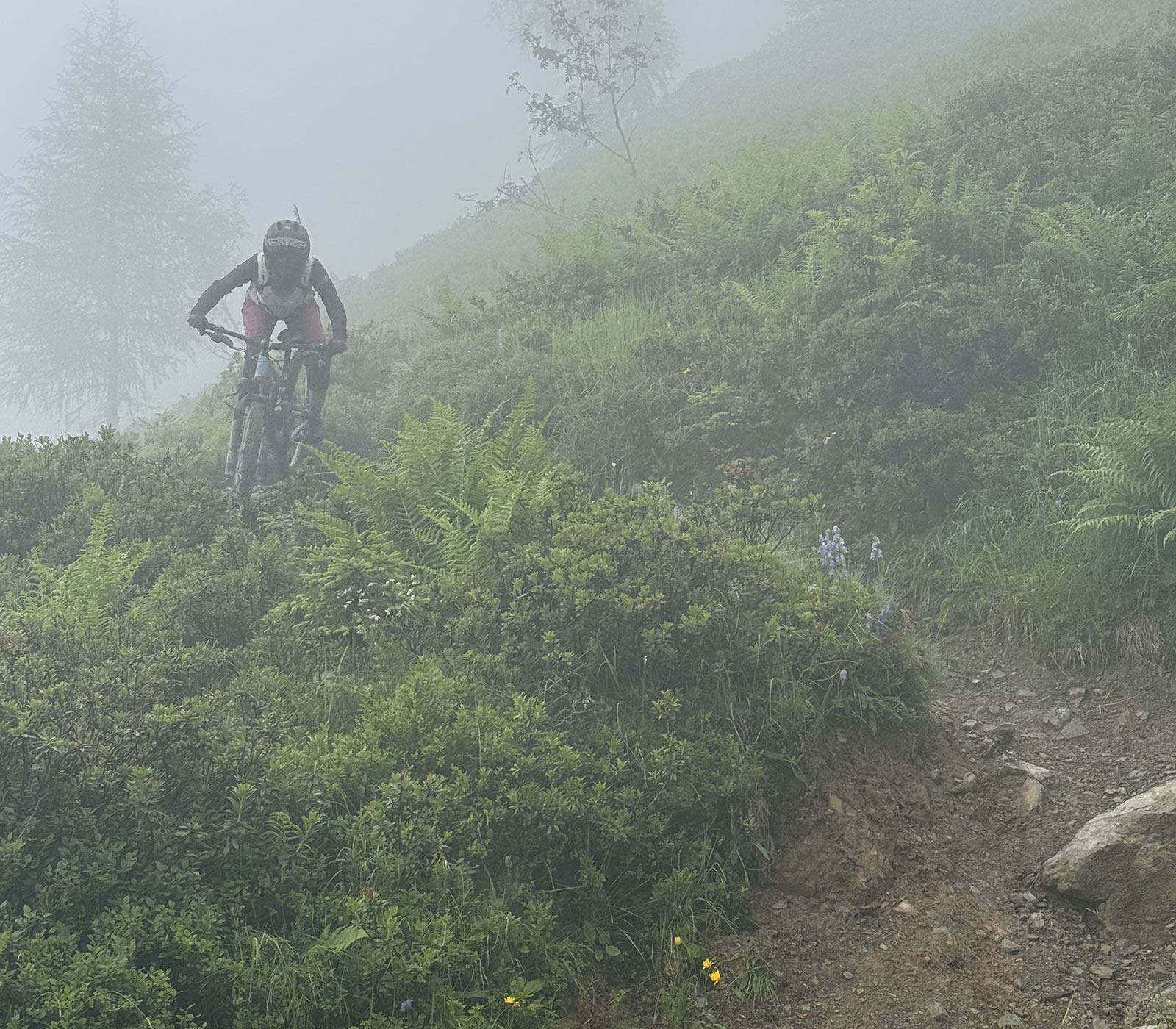
But the extra grip was especially impressive when we had a few wetter & muddier days riding the newest enduro trails at the Epic Bikepark Leogang and across the ridge into Saalbach.
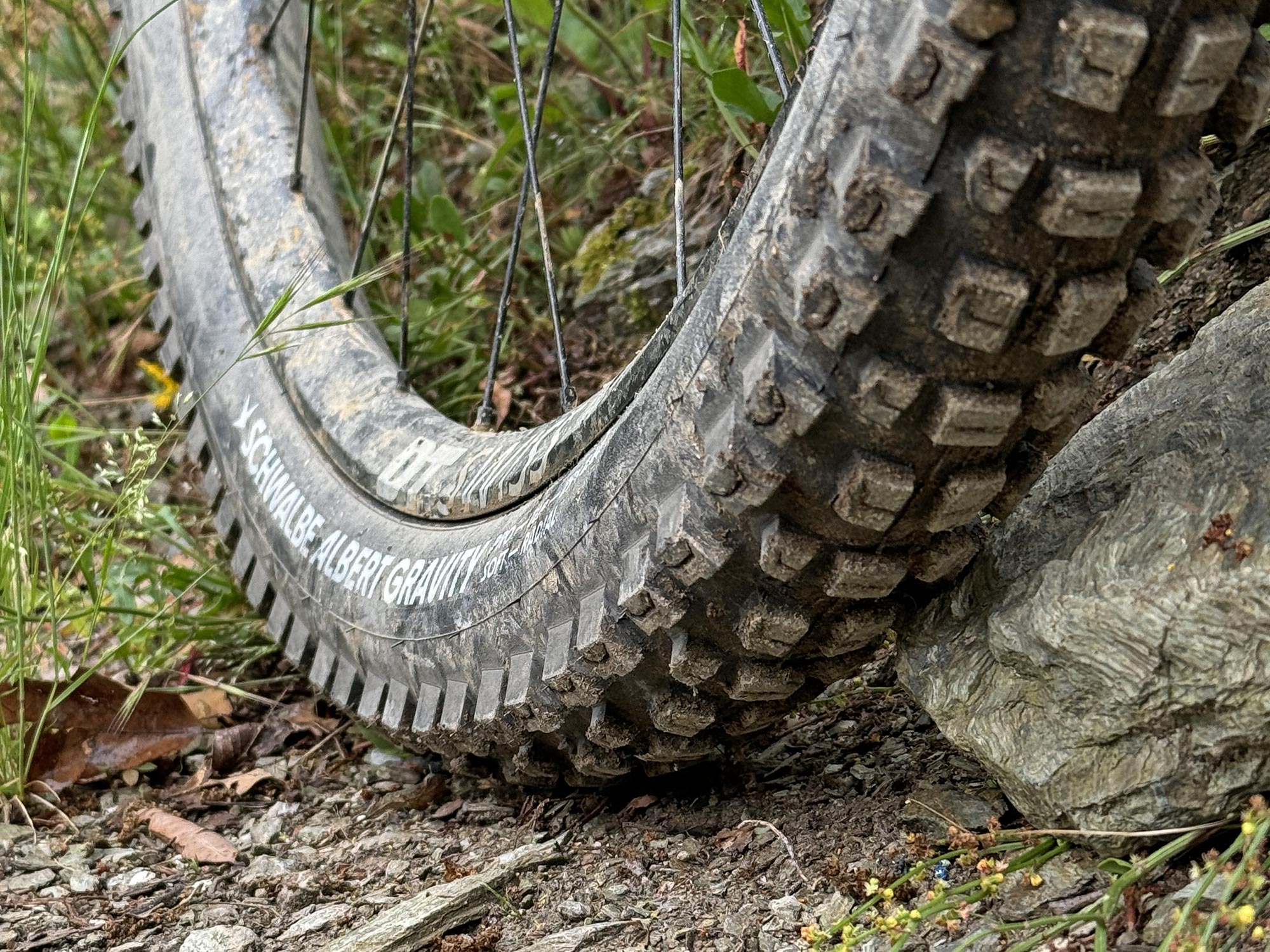
By dropping just 2psi out of the tires, they folded over and stuck to wet roots and slick rocks, even though they weren’t as open a tread, as dedicated soft or wet conditions tires. I even got the sense that the flexible way the tread folds over trail obstacles prevented them from really packing up with mud.
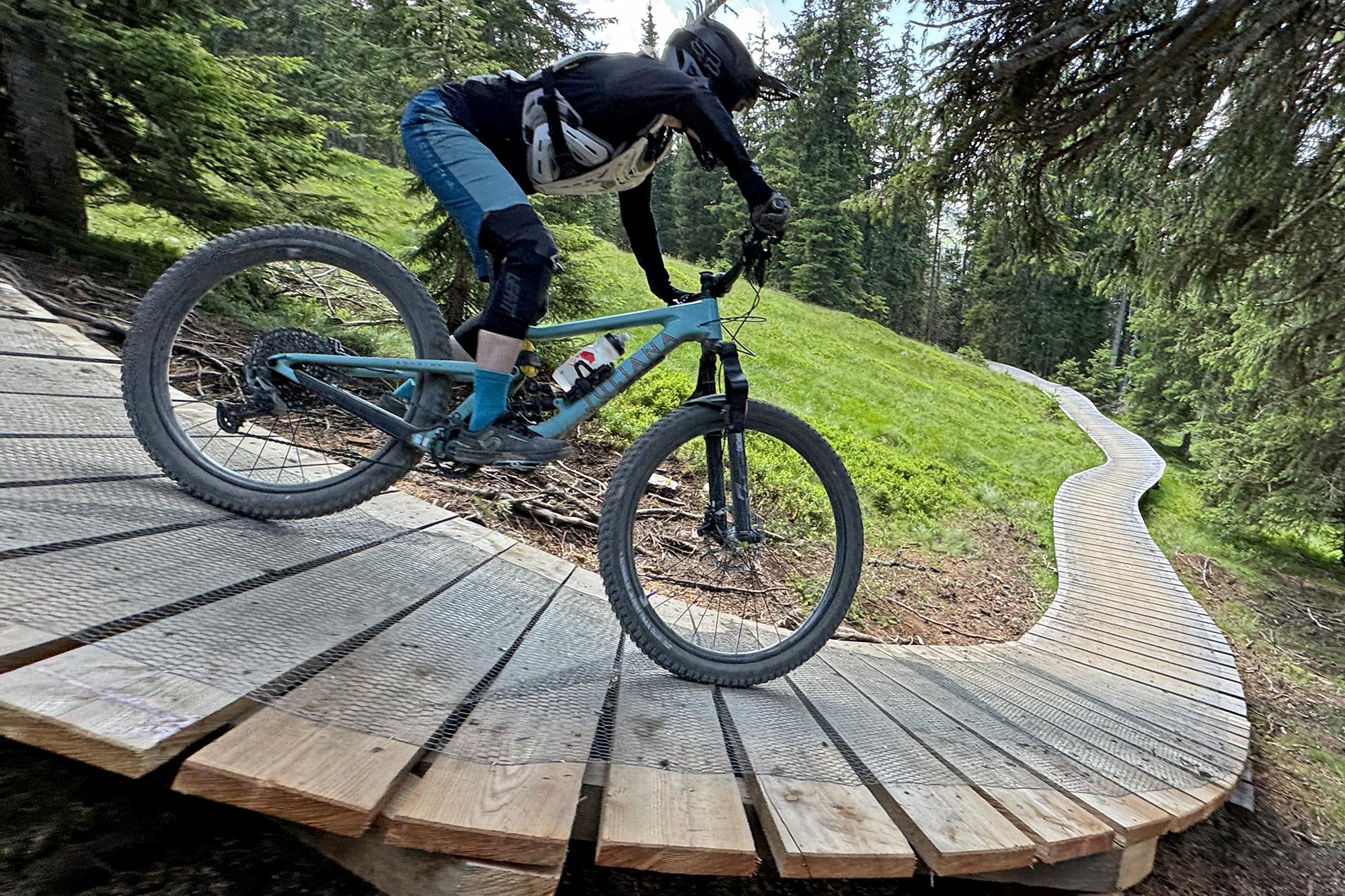
Riding Schwalbe Radials from Italy to Czechia, and everywhere between
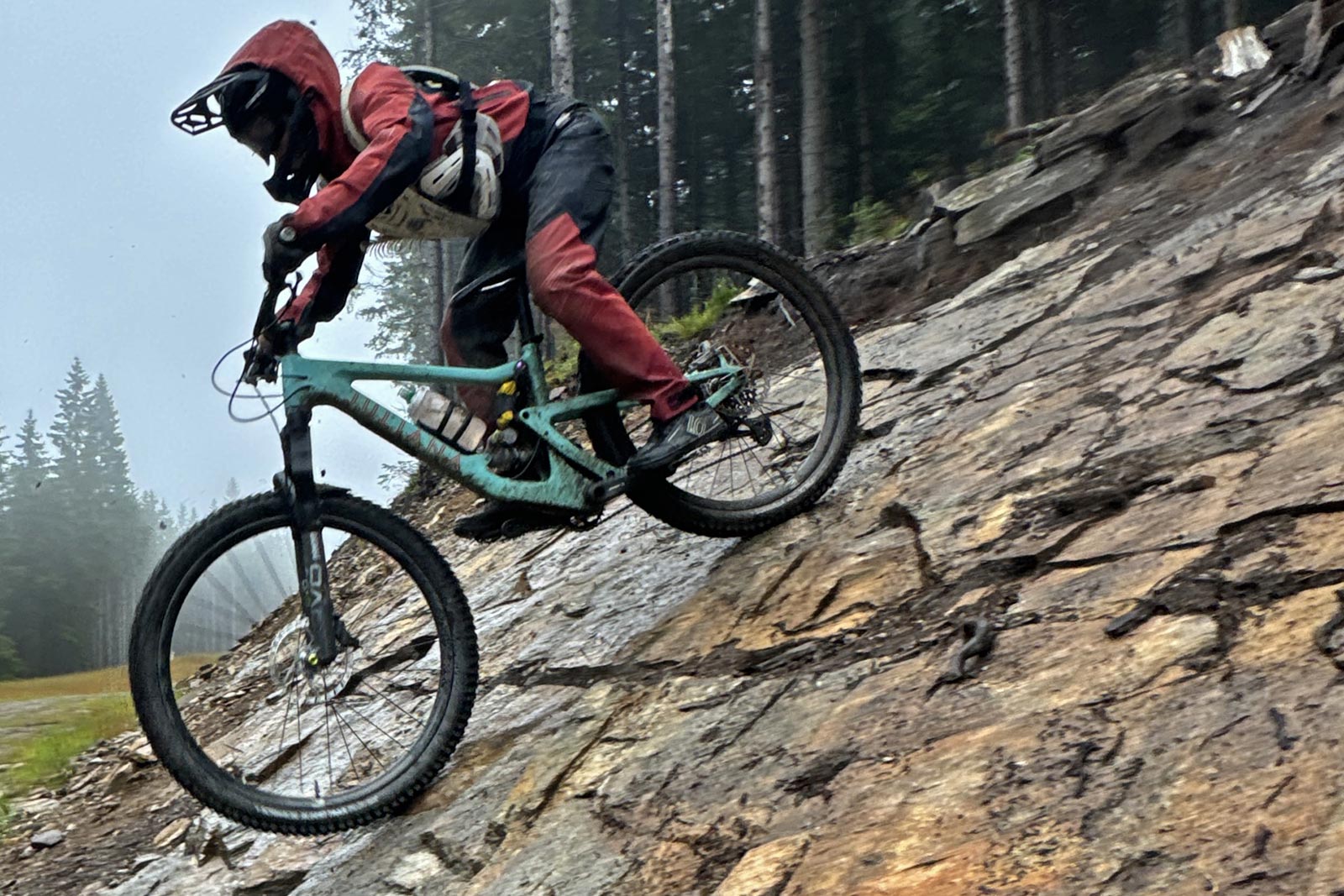
All said, in 2 months we’ve tested the tires in Finale; at Leogang, Saalbach, Ještěd, Kraličák, Kouty, Kopřivná, Klínovec & Plešivec bikeparks; the rocky Rychlebské stezky trail center; and our own rocky & loamy home trails in the northern Czech mountains on the border with Poland.
It’s been a lot of enduro riding.
Plus, some fast Czech Enduro racing over the weekend on rough tracks of dusty dry & loose natural loam.
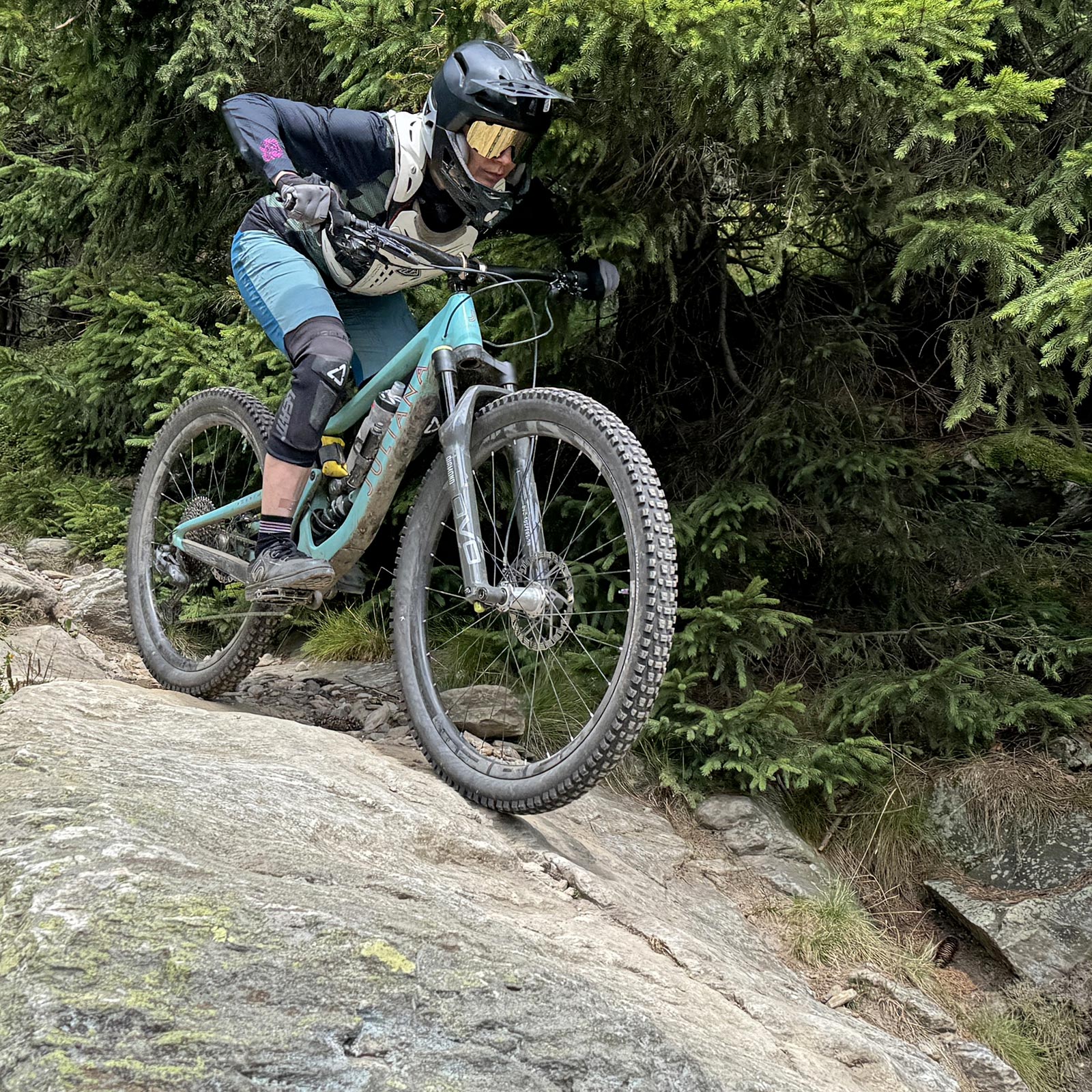
One other interesting aspect of the tire is a sense that they are slightly quieter – especially noticeable when I did the back-to-back comparison on the same trail over and over. I suspect this comes down to the slower rebound damping that Schwalbe described.
It’s more pronounced on super hardpack or big sections of smooth rock. But the Albert Radial tires just don’t seem to make as much noise as the older Super Gravity tires did.
Setup suggestions
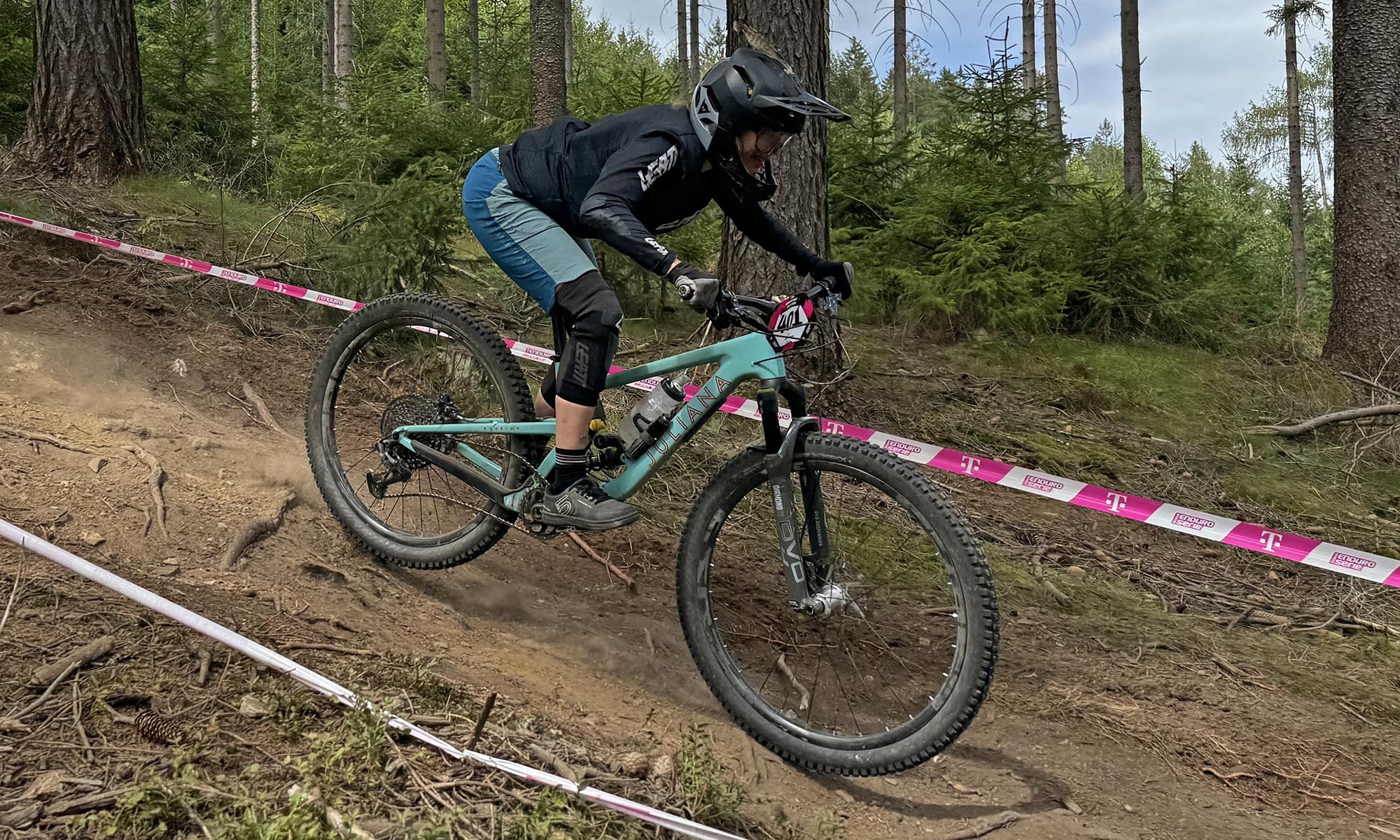
Riding the new Schwalbe Albert Radial tires, it simply feels like they have extra grip for free.
It is a little trickier than normal to reassess what your ideal tire pressure should be, because the tires are more dependent on having the ideal pressure for your weight, terrain, and riding style. Plus, a 2-4psi difference in pressure has a real noticeable effect on both how the tire grips and how much support you feel in corners. And you can’t just squeeze the tires to feel if it’s correct, because increased local flexibility makes the tire feel softer at the same pressure than other conventional bias-ply tires.
So it’s best to use a reliable/accurate pressure gauge, and start with around 5psi more than you would in a similar style of tire. Then, make any pressure changes in small increments. In the end, you’ll find more grip AND more support, most likely at slightly higher pressures than you would have thought.
Parting Thoughts on riding the new Schwalbe Albert Radial tires
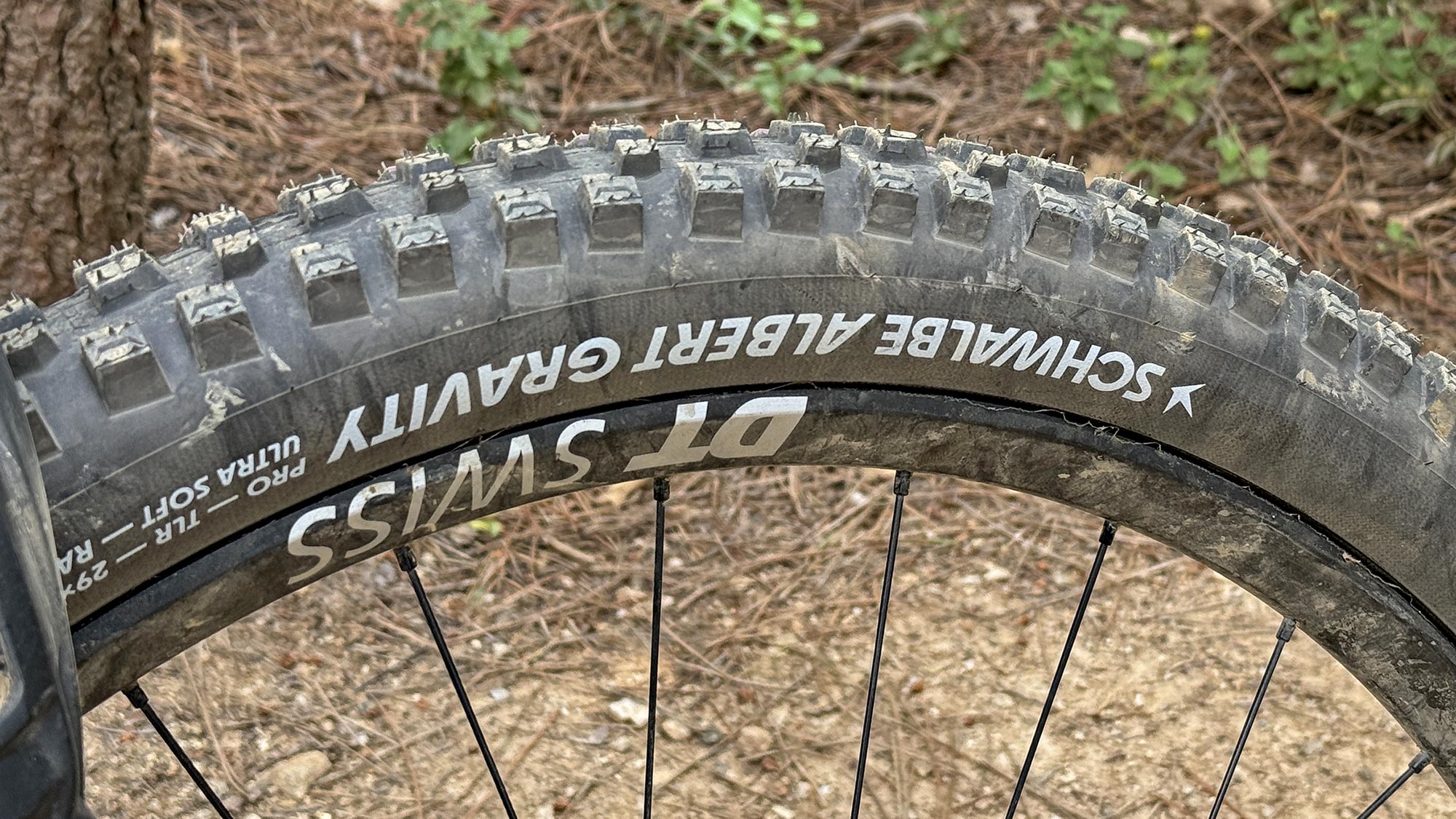
With that in mind, these new Schwalbe Albert Gravity & Trail Radials have done better than any other all-mountain or enduro tires that I have ridden in recent memory. They manage to deliver consistent, predictable grip across variable trail & weather conditions.
If you ride in loose or wet conditions all of the time, or need a conditions-specific race tire, you might need a more aggressive tread (like the Magic Mary or Shredda Radials). But if you want one tire that you just put on the bike and just ride, you’d be hard-pressed to find a more versatile solution.
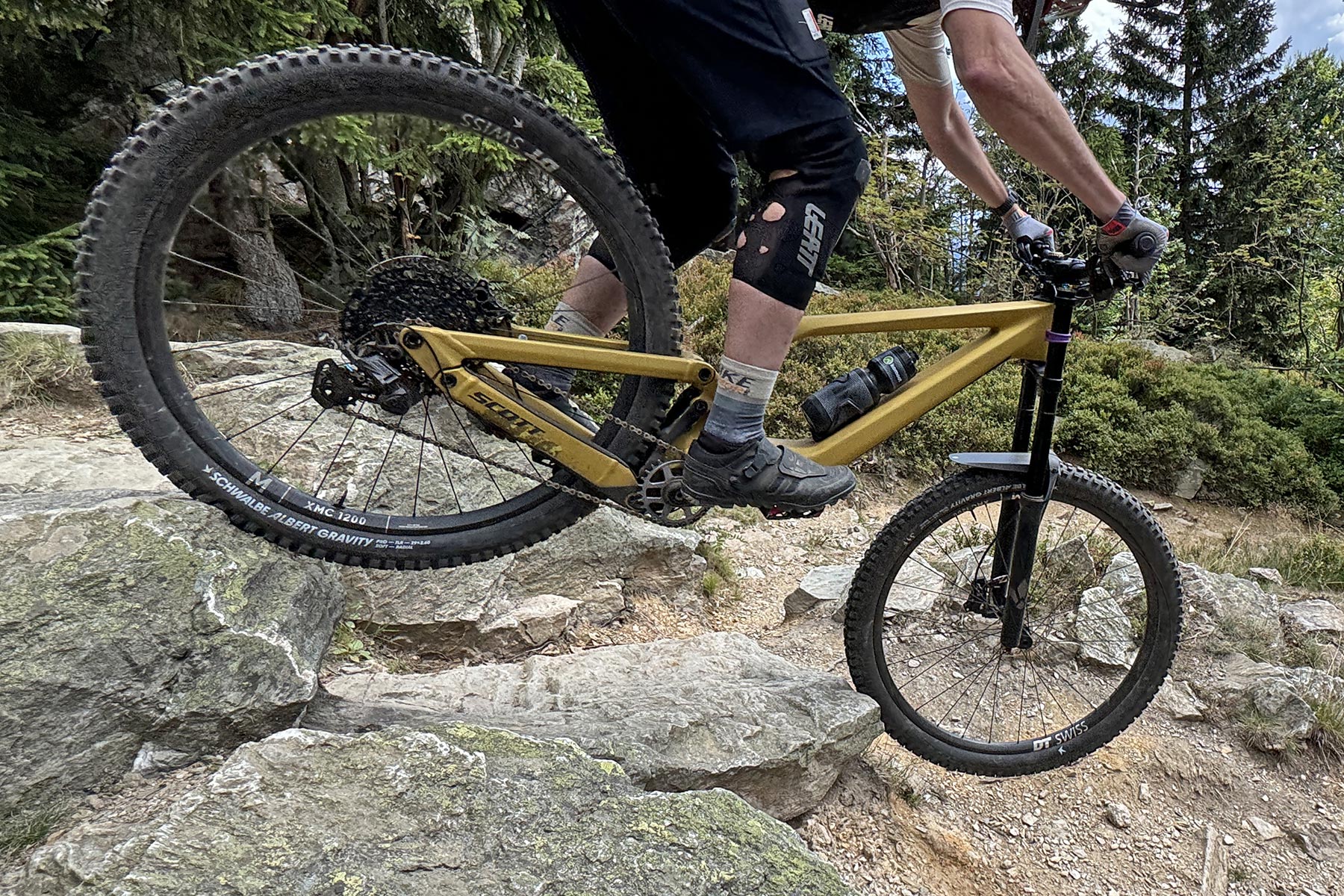
On that thought, I built this new Scott Ransom up last week. With the ultra-supple Formula Belva enduro fork and new lightweight DT XMC carbon wheels, it creates a pedal-able super-all-mountain bike, which will serve as a test bed for everything from aggressive trail to full-on enduro components. (Don’t worry, it only looks like a DH bike, but is actually a 16.5kg/36lb shredder.)
It’s already featured a first look at the newly available Trickstuff Maxima Black brakes. At the opposite end of the cost spectrum, first impressions are pretty solid on this worry-free MicroShift Advent X drivetrain!
And I can’t imagine a more ideal all-rounder tire than these new Schwalbe Albert Radials. My only real tough decision was whether to pick the tougher Gravity Pro casing or save 200g per tire with the Trail Pro version.
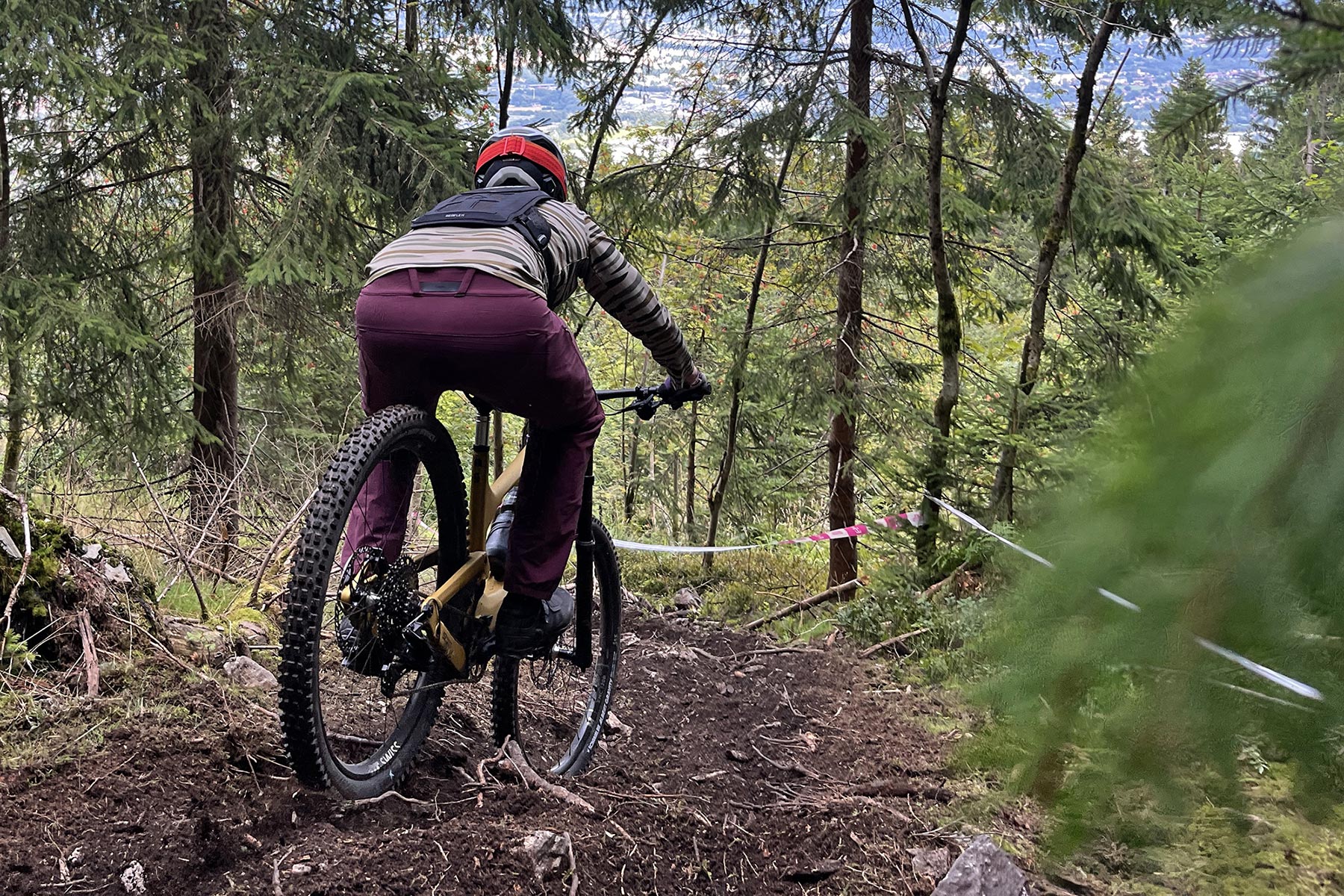
For now, I’ll stick with Gravity on this bigger bike, and keep Trail tires on the shorter travel trail bikes.
Looks like I found my new favorite mountain bike tire!
To find out even more, check out the core tech details, available models, and pricing in my Schwalbe Radial mountain bike tires launch story, here.
